"Never underestimate Joe's ability to fuck things up." -Barack Hussein Obama, 44th President of the United States Apparently, that includes (potentially) destroying human civilization via nuclear hellfire. Posted by: Monos | Jan 4 2023 19:25 utc | 3
I started a new technique on my affirmation campaigns. Instead of using my spreadsheet on the computer, I am simplifying the text into short sentences, and putting them all in a tiny little booklet. Easy for me to read quickly and simply. I have the strong urge to move away from an over reliance on computers for affirmation campaigns. Hum.
I hope this post finds you well. Some art. Some funny stuff. A tiny bit of Geo-political stuff. Some food. Some cats.
Basic MM fare. Enjoy.
The bitch slap of reality
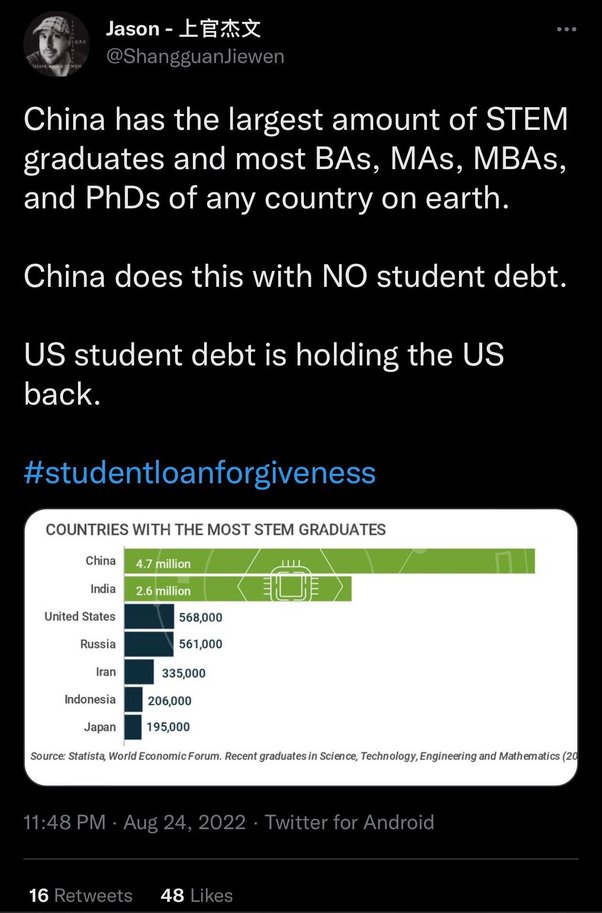
UPDATED 11:50 AM EST — NATO “Contact Group” (War Council) Meeting Now at Ramstein Air Base – Germany – Over Ukraine
At least thirty-two (32) military Generals have convened for a meeting at Ramstein Air Base in Germany, to discuss future “aid” and “tactics” for the ongoing Ukraine-Russia conflict. Today, the world will find out if Germany will approve the sending of German tanks to Ukraine – a “Red Line” for Russia.
Germany manufactures the Leopard-2 main battle tank. Several other countries in Europe have purchased a number of these tanks over the years, and want to ive them to Ukraine, so as to fight Russia, but there’s a problem.
When a country manufactures weapons, and then sells those weapons to another country, the sale is contingent on the receiving country agreeing NOT to re-sell (or give) those weapons to anyone else without permission of the originating country.
In this case, Poland want to give the Leopard-2 tanks they bought, to Ukraine. Germany has not given permission, so the tanks cannot go.
Last week, the German Defense Minister, Lebrecht, resigned There is now a new Defense Minister, and he is attending today’s meeting at Ramstein Air Base.
Leaked information coming out of Germany indicates the new minister will approve the transfer of Leopard-2 tanks, but right now, that is only RUMOR.
Yet, there are additional problems.
Through political back-channels, Russia has informed Germany that if German tanks attack Russian soil, it will be a violation of the Potsdam Treaty that ended World War Two. That Treaty makes clear Germany is only allowed to have a “Defense Force” which can be used “for nothing else.” Manufacturing tanks which are then sent to Ukraine to fight Russia, would be using the German military for “something else” and Russia’s position is that will violate the Demilitarization” provisions of the Potsdam Treaty. Russia allegedly told Germany that if German tanks attack Russian soil “World War 3 will begin immediately.
The rub here is that the former oblasts of Luhansk, Donetsk, Kherson, and Zaporozyhe, have now joined Russia and been accepted by the Russian legislature, called the Duma. So those territories are now “Russian soil.”
Ukraine does not recognize this, nor does the collective West. They refer to those oblasts as having been “illegally annexed.”
So Russia views the territories as Russian soil, the West does not. If Ukraine is given German tanks and use those tanks to attack “Russian Soil” it will re-start World War 2, or be known as “World War 3.”
That is how close the entire world is to horrifying war on a vast scale, and we all get to hear the decision about the German tanks, today.
UPDATE 11:50 AM EST —
The new German Defense Minister, Boris Pistorius has just publicly announced “NATO countries failed to reach a unified position regarding the supply of Leopard 2 tanks to Kyiv.” He went on to say “”Statements by the media that Germany is on the way to creating a coalition to send heavy tanks to Ukraine are lies. There are good reasons to send equipment, but there are also reasons not to.” All pros and cons must be weighed. Many allies share our point of view, Pistorius added.
Coffee Syrup
This is an old New England favorite. It is usually stirred into cold milk (2 to 3 tablespoons per glass). It can also be used to flavor milkshakes, or used as an ice cream topping.
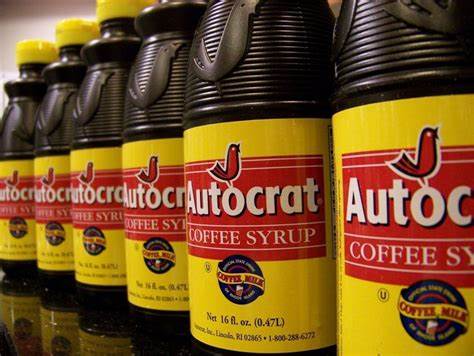
Instructions
- Place enough coffee and water to make 6 servings. Run the coffee cycle as usual.
- When the coffee is finished brewing, discard the used coffee grounds and add to the filter a second quantity of coffee sufficient to make 6 servings. This time, instead of adding fresh water to the coffeemaker, pour the already-brewed coffee into the machine. Run the coffee cycle again. You’ll end up with double-strength coffee.
- Repeat the process again, using new coffee, but reuse the brewed coffee instead of water. In the end, you’ll have triple-strength brewed coffee.
- Measure the amount of brewed coffee. Add half as much sugar as there is brewed coffee. For example, if after the three brewing cycles you have 5 cups of brewed coffee, add 2 1/2 cups granulated sugar. Stir briskly until the sugar is dissolved. Make sure you add sugar while the coffee is hot so that the sugar dissolves.
- Store the syrup in a tightly covered jar in the refrigerator. It keeps a very long time.
Notes
You need a coffeemaker in which boiling water goes through the ground coffee in a filter and drips into a pot. The ingredient amounts will vary depending on your coffeemaker and how much syrup you want to make.
Multi-Domain Precision Warfare (MDPW)
China is pursuing a new military system known as Multi-Domain Precision Warfare (MDPW) to align its forces from cyber to space, an effort U.S. officials say is fueled by a need to counter the Pentagon’s Joint All-Domain Command and Control initiative.
Like JADC2, the MDPW core operational concept, as it’s known, relies on interlinked command and control, communications, computers, intelligence, surveillance and reconnaissance to quickly coordinate firepower and expose foreign weaknesses, according to the annual China Military Power Report, which the U.S. Department of Defense delivered to Congress in November.
The Chinese military, the People’s Liberation Army, “refers to systems destruction warfare as the next way of war,” the official added. Under that premise, warfare is no longer solely focused on the destruction of enemy forces; rather, it is won by the team that can disrupt, cripple or outright destroy the other’s underlying networks and infrastructure.
The U.S. considers China the No. 1 threat to its national security, with Russia a close second. Both have long invested in military science and technology.
Cheese Characteristics and Uses
American – Semi-soft, mild, smooth, light yellow or orange, usually cut into square slices; it does not separate when melted.
Crackers, English muffins, pretzels, apples and red grapes. Serve with beer, light white wine, ice-cold milk, tomato juice and lemonade.
Amish (Lacy) Swiss – There are different types of Amish Swiss which have been perfected by the Amish in different areas all around the country. The most commercially popular is a longhorn shaped Swiss cheese which develops small lace-like eyes. It is creamier in texture than regular Swiss cheese.
Ham and cheese sandwiches.
Anejo Enchilada – Mexico. A firm, pressed cheese rolled in paprika. This cheese is not as strongly flavored as Cotija but can be easily shredded or grated. It is commonly used as a topping or stuffing for enchiladas, burritos, and tacos.
Asadero – A smooth, yellow cheese with more “tang” than the mild Queso Quesadilla cheese. This cheese is ideal for baking because its stronger flavor adds to the appeal of a baked dish.
Asiago (ah-zee-AH-goh) – Piquant, sharp tasting cheese with a nutty, pleasantly-salty flavor. Asiago blends well with Cheddar, Parmesan or mozzarella. This cow’s milk cheese gets its name from from the village of Asiago in northern Italy. There are two types, Asiago d’allevo and Asiago pressato. Both fresh Asiago (delicate and sweet, made with whole milk) and aged Asiago cheese (more savory in taste, aged from 3 to 12 months, and made with skim milk) may be purchased in the United States in many different grocery stores (including Walmart) and gourmet markets.
Asiago Pressato PDO is semisoft and a pale straw-color, and dotted with some small holes. Look for the mark Asiago POD or PDO ( protected designation of origin). Authentic Asiago comes from only four places in Italy – Vicenza, Trento, and parts of Treviso and Padua. The The symbol of authentic Asiago PDO is:
The d’allevo is made from partially skimmed cows’ milk and is beige in color with distinctive tiny holes running throughout the cheese. When ripe, the cheese can be soft and makes for a great table cheese, but when aged for a year or longer, it is used as a grating cheese. The flavor is rich, somewhat nutty, but mild. It may be coated with paraffin. It can range from a softer firm to a hard granular texture depending on aging. When grated, it melts quickly over heat. In a restaurant, ask for Italian Asiago PDO. Aged Asiago may be shaved or grated to serve over salads and pastas.
Pasta, figs, grapes, apples and pears. Serve with red wines, cider, cranberry juice and sparkling red grape juice.
Baby Swiss – The mildest, sweetest cheese of the family that includes Switzerland’s famous Emmentaler and Gruyere. Baby Swiss is notable for its light, almost white color, creamy texture and small holes. Ivory to pale yellow, creamy with small eyes, it melts well when shredded. It has a buttery, slightly nutty and sweet flavor and smooth melting characteristics. A smoked version is also available.
Cheese trays, sweet fruits and berries, croissants and muffins. Serve with fruity white wine, aged red wine, juices and ice-cold milk.
Basato – Uruguayan. Semi-hard and sharp. This unique table cheese can be used as you use Provolone.
Excellent in antipasto, sandwiches, as a topping, or in cooking. It shreds well.
Blue Cheese (Bleu Cheese) – Semi-soft white cheese with blue veins, sometimes crumbly interior. This is a generic term to describe many different types of cheeses made throughout Europe and North America. All blues begin as unpressed white cheese onto which a blue mold such as Penicillium roqueforti is dusted. The mold makes its way into the interior of the cheese via forty or so holes punched through the wheel of cheese as it ages. Most blues have a crumbly texture and a sharp, tangy flavor. Blue cheese melts quickly under heat when crumbled.
Serve blue cheese with robust, whole-grain crackers. Crumble blue into sour cream or plain yogurt as a dip, or into mayonnaise as a dressing. Pears, raisins, fruit breads and walnuts. Serve with full-bodied red wines, cappuccino, fruit juice and champagne. Port wine is the classic accompaniment.
Boursin – Soft, French dessert cheese. Rich and creamy with some tartness.
Good with fruit and wine.
Brick – Semi-soft. Ivory with numerous small round and irregular-shaped holes and an open texture. Shredded brick melts quickly under heat. Mild with a sweet, pungent flavor.
Apples, grapes, pears, onions, sweet crackers and dark bread. Serve with light red wines, beer, cran-apple juice, cider and sparkling mineral water.
Brie (bree) – A world-famous externally-ripened cow’s milk cheese that originated in the 13th-century near Paris. It is an easily recognized thin disc covered with a whitish bloom. This rind may be eaten depending on personal taste. At its peak, the cheese’s interior should be plump and glossy, but not runny or smelling of ammonia, which indicates over-ripeness. Its flavor (without the rind) may be best described as mildly tangy and fruity.
Serve Brie with a variety of fruits. Thin slices served on a sandwich with roast beef are quite tasty. Some people enjoy Brie baked in a pastry crust.
Camembert – Created in 1789 by Marie Harel, a peasant woman and said to have been christened by Napoleon himself, this cow’s milk cheese (40 to 45% fat) is world renown. 11 centimeters in diameter and 3 to 4 centimeter’s thick, this smooth creamy cheese with a soft white rind should be served at room temperature when perfectly ripe. You’ll know it’s perfectly ripe when it oozes thickly. If it is runny, it is overripe. An externally-ripened cows-milk cheese similar in appearance to Brie. Its flavor is only slightly more assertive than Brie, and its rind is edible.
Use Camembert as you would Brie.
Cantal – Firm, yellow cheese from France. Piquant flavor.
Good with wine or beer, for snacks, appetizers, desserts or cooking.
Cheddar – Hard, smooth, firm, it can be crumbly and have a white or orange color. Cheddars that are more mild melt well under direct heat whereas a sharper Cheddar will not melt as well and will perform better shredded and incorporated in a sauce. Ranges from mild to sharp, becoming sharper with age. Cheddar can be frozen but some of its moisture will be drawn out. This does not change the flavor but it does affect the texture. For this reason, once Cheddar has been frozen it is best suited for cooking.
Apples, pears, pumpernickel and rye breads, mushrooms and tomatoes. Serve with red wines, beer, apple cider or Port.
Chesire – Firm, moist, salty cheese from England. Sometimes crumbly. Rich and mellow.
Good for snacks, appetizers or dessert. Serve with dry red wine or beer.
Chevre – The French word Chevre is a generic term for cheese made from the milk of goats. Most Chevre made in the United States is a very fresh, soft white cheese shaped into small logs. Contrary to popular belief, its flavor is tangy, yet mild.
Colby – Hard cheese, although softer with a more open texture than Cheddar. It is light yellow to orange, has tiny holes and melts well when grated. Ranges from mild to mellow, lightly sweet to sharp and tangy and is often sold in longhorn shape. An American original, Colby is named for the town where it was invented. Colby is a “washed curd” cheese. The term “washed curd” indicates that during the cooking process the whey is replaced by water to reduce the curd’s acidity. In addition, the curd is not turned and stacked like a Cheddar, nor is it pressed quite as hard. The cheese which results is somewhat similar to Cheddar, but softer and moister with a mild, sweet flavor. Colby may be used just like Cheddar.
Apples, pears, pumpernickel and rye breads, mushrooms and tomatoes. Serve with red wines and beer, apple cider or Port.
Colby Jack – The colorful combination of a yellow cheese (Colby) and a white cheese (Monterey Jack). This mixture of two different cheeses gives Colby Jack a unique marbled look. It is generally sold in a full-moon or a half-moon shape when it is still young and mild in flavor. Eight ounce bars cut from 40 pound blocks are another popular way you’ll find this cheese packaged and sold.
Cotija – Known as the “Parmesan of Mexico,” this cheese is strongly flavored, firm, and perfect for grating. It is used in Hispanic cooking in a manner similar to the way Parmesan is used in Italian cooking.
Cotija is commonly used to add a lively garnish to common dishes: simply sprinkle on top of refried beans, salads, chili or lasagna. In Mexico, it is also widely used to enhance the flavor of many savory dishes by mixing directly into the casserole or recipe. In the U.S. it is increasingly popular on pasta.
Cottage Cheese – White with small or large individual moist curds that resist melting. Cottage cheese should not be frozen. Milky and mild.
Tomatoes, citrus fruit, herb or fruit breads, salads and vegetables; serve with white wine or ice-cold milk.
Cream Cheese – Soft, white, smooth, spreadable cheese that melts quickly and should not be frozen. Mild and slightly acidic, often flavored with fruits or herbs.
Fresh fruit, jams and jellies, fruit and nut breads and bagels; serve with cranberry or grape juices or a light white wine.
Duroblando – A strongly flavored Caribbean cheese that is firm, and has a mild smoked flavor. It is used for grating in a manner similar to Cotija.
Edam – Firm, coated in a red wax with a creamy yellow, semisoft to hard interior. It melts quickly under heat when shredded. Mild, slightly salty, nut-like flavor.
Mild Edam – Peaches, melons, apricots and cherries. Serve with fruity wine and lager beer, lemonade, flavored iced tea, apple juice and raspberry sparkling water.
Aged Edam– Apples and pears. Serve with fruity red or white wines and sparkling red cranberry juice.
Emmentaler – “Swiss” cheese from Switzerland. Hard and smooth, pale yellow cheese with large holes. Sweet, nutty flavor.
Good for fondues, snacks, dessert and cooking. Serve with red wine or beer.
Farmhouse Cheese – These are terms you will hear and see quite often when dealing with limited-production, artisan crafted cheeses. “Farmhouse Cheese” is not a specific type of cheese, but a term used to denote a cheese made by a farm using exclusively the milk from its own herd.
Additionally, Farmhouse cheesemakers usually use raw (unpasteurized) milk in their cheeses because they feel the pasteurization process removes some of the “character” of their milk. During the cheese’s aging process, the cheese builds up certain acids which cause it to “self-pasteurize,” making it perfectly safe to eat. Because Farmhouse cheeses are usually made in small batches by hand, the cheesemaker’s individual style becomes very evident in the flavor, texture and even the color of the finished product.
Feta – Of Greek origin, this pale white cheese was originally made from the milk of sheep. Today, in the United States, it is often made from cow’s milk. Feta’s curd is only lightly pressed and then ripened in brine, giving the cheese a crumbly texture and salty taste. Soft, flaky, crumbly and white, feta melts well over heat. Salty, pickled flavor.
Use on a Mediterranean-inspired appetizer tray or crumbled over salads. Olives, sun-dried tomatoes, vegetables, fruit, seafood and chicken; serve with Greek wines like retsina, tomato juice and citrus sparkling water.
Fondu au Raisin – French, dessert cheese. Semi-soft, mild and creamy. Coated with black grape seeds.
Serve with nice red wine, French bread, fruit.
Fontina – Semi-soft from Italy. Mild. nutty flavor, light brown rind.
Good in fondue, with bread, fruit, for dessert. Serve with dry red wine.
Fromage Blanc – A very soft, spreadable unripened cheese made from skim milk. Literally translated from the French, Fromage Blanc simply means “white cheese.”
Gorgonzola (gohr-guhn-ZOH-lah) – Semi-soft with a light ivory surface and interior marbled with blue-green veins. Piquant, spicy flavor similar to blue cheese. It becomes crumbly with age and melts quickly when crumbled over heat. Named for the Italian city where it is made, this cow’s milk cheese is rich and creamy with a slightly pungent flavor. When aged over 6 months, both the flavor and the aroma become stronger….much stronger. Some people think its stinky, but if you like strong cheese, you will love gorgonzola.
Pears, raisins, fruit breads, sweet crackers and walnuts. Serve with full-bodied red wines, sweet red wine, cappuccino, fruit juice and champagne.
Gouda – Originating in the Netherlands, Gouda is easily recognized by its distinctive red waxed exterior, enrobing a three to fifteen-inch wheel. The cheese itself is straw-colored, with a firm yet creamy texture scattered with small holes. Typically aged for only a few months before it reaches maturity, its mild and buttery flavor develops a richer tang as the cheese ages. Gouda can range from semisoft to firm, has a smooth texture and is often found in a wax coating. Gouda melts quickly when it is shredded and heated. Baby Gouda is usually coated in red wax; a more mature Gouda has a yellow wax coating and black wax or brown rind suggests it has been smoked and aged for over a year. Mild and nutty, it is often available smoked or with caraway seeds.
Mild Gouda – Peaches, melons, apricots and cherries. Serve with fruity red or white wine, lager beer, orange juice, apple juice, flavored tea and citrus sparkling water.
Aged Gouda – Apples and pears. Serve with hearty red wine, beer, coffee, cider and sparkling red grape juice.
Smoked or flavored Gouda: Apples, pears, thinly sliced prosciutto. Serve with red wine, beer, sparkling cider, tomato or vegetable juice and cran-grape juice.
Gruyere – It is a shiny yellow, hard, smooth small-eyed cheese that melts well without separating and is often used for sauces, with grilled meats, poultry and fish. Mild and slightly sharp.
Prosciutto or thinly-sliced ham or salami, apples, figs, melon, dates, walnut halves. Serve with full-bodied red wine, beer or ale, tomato juice, cranberry juice and cider.
Havarti – Semi-soft light to pale yellow with tiny eyes in its smooth body, it melts well when it is shredded. Mild to mellow.
Roasted red peppers, olives, bread, and bread sticks. Serve with fruity white wine, sparkling water, light red wine and sparkling water.
Kasseri – A firm Greek cheese, lends a pungent, nutty taste; if it is unavailable, Parmesan can fill the role.
Use in Pastitsio.
Liederkranz – Strong cheese, soft and creamy. From the U.S. Similar to Limburger.
Good on dark bread, with beer or wine.
Limburger – Very strong cheese from Belgium. Semi-soft with a smooth, creamy ivory body is covered in a brownish exterior that melts quickly under direct heat when it is sliced. Strong, robust and highly-aromatic.
Pumpernickel and other whole-grain, dark breads and crackers, pretzels and onions. Serve with beer, full-bodied red wine, cranberry juice, cran-grape juice and tomato or vegetable juice.
Livarot (LEE-vah-roe) – One of France’s oldest, a wonderful cheese named after a village in Normandy and whose nickname is the Colonel because it is bound with five strips of paper that look like a Colonel’s stripes. Originally, the stripes were made of natural rush harvested from the edge of ponds. This is a strong cheese with lots of flavor (beefy, nutty) and a pungent aroma. (If it has a smell of ammonia, it is past its prime) Livarot is made from cow’s milk but has only a 40% fat content. It is naturally white but colored orange-red with a tincture from a South American tree called the roucou. It has a soft washed rind, is round with a 12 cm diameter and is 5 cm thick.
Livarot goes great with a big red wine as well as with apple cider. Try it with bread and/or fruit, especially apples and pears.
Mascarpone (mas-cahr-POHN-ay) – Made in Italy from cow’s cream, mascarpone is a buttery double to triple cream cheese. It has an ivory color, smooth texture and cream-like flavor. It is sold in 8 ounce and 1 pound containers. Hard to find in this country, you may have to look in a good cheese shop or specialty market. Creamy, thick and smooth, it melts well in sauces. Full-flavored, semisweet and butter-like.
It is indispensable for cannoli fillings as well as the classic dessert, Tiramisu, and is the foundation for Torta. It may be used as the primary ingredient of a “killer” cheesecake. Fresh fruits, berries, fresh figs, shortbread and ladyfingers; serve with sparkling, light, fruity wines and coffee or liqueurs.
Monterey Jack – Semi-soft, creamy white with tiny cracks, Monterey jack melts best when it is shredded or sliced. Mild to mellow. Created by Spanish monks in early California, Monterey jack is a light-colored, creamy-textured relative of Cheddar noted for its mild flavor. It is because of that mildness that Monterey jack is so often flavored with Jalapeno Jack being the most famous of this type. All jack cheeses melt beautifully.
Especially good on broiled, open-face sandwiches. Jack’s meltability has made it indispensable for Southwestern and “Tex-Mex” dishes, shredded over tacos, stuffed into enchiladas or melted over refried beans. Serve jack cheeses with beer and fruity wines.
Morbier (MORE-bee-yay) – Named for a little farm town in France, this semisoft cow’s cheese was originally made with left over cheese for personal consumption by the cheesemakers. At the end of the day the cheesemaker would take leftover curd from making Gruyere de Comte and press it into a mold. To keep it from drying out and to keep the insects away, he would top it off with a little ash. In the morning he would add any additional curd on top of the ash and you had Morbier. Today it is made from a single batch of mild and add a harmless vegetable product to give it the same appearance. It measures 15 – 18 inches in diameter, about 3 inches in height, weighs about 20 pounds, and has a minimum fat content of 45%.
Mozzarella (maht-suh-REHL-lah) – A semi-soft creamy white, malleable cheese with a mild flavor typically made from cow’s milk. It melts best when it is sliced or shredded. Often known as “The Pizza Cheese,” mozzarella is mild and delicate and is often molded into shapes. It came from southern Italy where it was originally made from buffalo milk. If you are lucky enough to find real buffalo mozzarella in your local market, try it. Although expensive, it’s like eating ice cream compared to frozen yogurt. Mozzarella is packaged in a variety of sizes and is produced in whole-milk, part-skim and skim varieties. The higher the fat content, the richer and more tender the cheese.
Besides pizza, Mozzarella may be used to top any baked Italian dish, including ziti casseroles, lasagna, and veal, chicken or eggplant “parmesan”. It may be marinated in good olive oil and herbs as an antipasto. Bread and pan (or deep) fry mozzarella “cutlets” and serve on a pool of marinara sauce. Good with mushrooms, plum tomatoes, sweet crackers and pumpernickel bread. Serve with light red wine or a white zinfandel, soda, beer and juice.
Muenster – Semi-soft yellow, orange or white surface with a creamy white, smooth interior, it melts quickly when shredded. Mild to mellow. A surface ripened cheese, is a mild cheese that has a resilient, open texture with just a hint of salt. One of Muenster’s trademarks is a dark orange coloring applied to the outside of the cheese. This is a natural coloring called annatto, which is tasteless.
Shredded for sandwiches and pizza toppings. Tomatoes, baby carrots, zucchini, rye and whole-grain breads, crackers and mustard. Serve with fruity wine like a white zinfandel, beer, juice and soda.
Neufchatel – Originated in Normandy France. It is a very soft, spreadable cheese similar to cream cheese. It differs from true cream cheese because it is made from whole milk and not cream. Neufchatel can be molded into many shapes and is traditionally molded in a heart shape. However, in North America it is more commonly found in a brick form (and is found next to the regular cream cheese in the supermarket).
Use instead of cream cheese in almost any recipe. It is also very good on toasted bagels, with or without lox and raw onion.
Panela – The most popular fresh cheeses in Mexico, this cheese is mild, white, and crumbly. Like Queso Blanco, it will not run when heated. It will get soft and creamy but will not lose its shape.
Used in Mexico for many cooked dishes and is commonly crumbled over salads, tacos, chili and burritos.
Parmesan – Hard Italian cheese, with sharp, piquant flavor. A grating cheese.
Used in all types of cooking, especially Italian dishes.
Parmigiano-Reggiano – There are parmesan cheeses made all over the world but there is only one Parmigiano-Reggiano. Although more expensive, this granular textured cheese whose processing method hasn’t changed in the last 700 years is usually aged for 2 years. If labeled stravecchio – 3 years or stravecchiones – 4 years. Two reasons why Parmigiano-Reggiano has better taste and consistency; (1) the flavor of the milk which comes from cows whose diets are strictly controlled, and (2) the strict production codes that have kept the cheese making the same for centuries. Only fresh milk, rennet, and salt are allowed in the dairy. However, in 1984 the laws changed to allow the entire years production be branded Parmigiano-Reggiano. Prior to 1984, only the cheese produced between April and November could be labeled such.
Pasteurized Process Cheese – This popular style of cheese encompasses cheeses like white and yellow American and many smoked varieties. Natural cheeses like Cheddar and Swiss are ground or shredded together, and heated in excess of 150 degrees F. through the introduction of very hot steam. Concentrated milk fat and an emulsifying agent are added, along with a preservative and sometimes a natural coloring agent. While hot, it is poured into a mold and allowed to cool. The end result is a smooth, consistent, uniform piece of cheese which has better keeping qualities and does not continue to sharpen like non-pasteurized cheeses.
Pasteurized Process Cheese Food – The difference between pasteurized process cheese and pasteurized process cheese food is that skim milk is added along with other flavorful ingredients like jalapenos, garlic, onion, caraway, or various other spices. Pasteurized Process Cheese Food is lower in fat than regular American Cheese and most natural cheeses.
Pasteurized Process Cheese Spread – A dairy product similar to pasteurized cheese food but higher in moisture to allow it’s easy spreadability. These cheese spreads come in many varieties and flavors and are also lower in fat than regular natural cheese.
Pecorino (peh-koh-REE-noh) – From the word pecora which means ewe in Italian, cheeses made from sheep’s milk in Italy are called pecorino. Although the majority of pecorino is made in southern Italy, especially Sardinia, the best known pecorino is Pecorino Romano. Genuine Romano is only produced in the province of Rome from November to June. Locatelli is genuine pecorino cheese. Pecorino is straw colored, 36% fat, semi-hard, granular with a smooth rind coated in oil. It comes in a cylindrical shape about 12 inches in diameter, 16 inches tall and although a little sharper than Parmesan, it is often substituted when used in cooking. It has an intensely strong sheepy quality to it. It is to southern Italy what Parmigiano-Reggiano is to the north. Look for the sheep’s head logo with Pecorino Romano embossed on the rind to make sure you are getting the real stuff.
Grated on pasta dishes.
Pepper Jack – A Monterey jack cheese which has had jalapeno peppers blended in. It has a mild creamy texture, yet the peppers add a delicious spicy flavor.
Can be eaten as a snack or it can be a marvelous addition to any recipe.
Port du Salut (por du sa lu’) – Semi-soft, smooth and buttery. Mellow to robust flavor between Cheddar and Limburger.
Dessert cheese; delicious with fresh fruit. Great with apple pie. Good on a snack tray.
Provolone – The hard, stringy texture makes it easy to cut without crumbling. This light yellow to golden brown cheese is usually packaged in round, pear and sausage-shaped packages bound with a cord. It melts quickly when shredded. Full, sharp, piquant, usually smoked flavor. Provolone is the ubiquitous “hoagie cheese” found on almost all Italian-style sandwiches. Generally formed into cylinders or ball-shapes (in the U.S.), Provolone is white and firm-textured with a mild flavor. Provolone is very often smoked, making the cheese’s flavor more assertive.
Besides its use in sandwiches, versatile Provolone may be used as a pizza topping (with Mozzarella), served on an antipasto tray or used in salads. Tomatoes, roasted red peppers, olives, breads and pears. Serve with full-bodied reds like Merlot or Chianti and sparkling water.
Quark – This is soft, spreadable German-style cream cheese. Its fat content is higher than the skim milk Fromage Blanc, but significantly lower than Mascarpone. It is very white, with a tangy flavor.
Very versatile, Quark can be used in everything from bagel spreads to desserts.
Queso Blanco – This mild tasting cheese is the most popular cheese South of the Border – both for snacking and cooking. It is wonderful to cook with because, unlike American-type cheeses, it will become soft and creamy when heated but will not melt!
Use for stuffed chicken breasts.
Reblochon – Creamy, French cheese. Semi-soft, with mild and nutty flavor.
Good for dessert, with French bread, fruit, wine.
Ricotta – From Italy. Soft and fresh, mild and creamy.
Important cooking cheese for many Italian dishes, including lasagna.
Romano – Hard Italian cheese. Varies from mild to sharp.
Young cheeses good with bread, fruit, wine. Older cheeses grated for cooking.
Roquefort – Semi-soft French cheese. White marbled with blue-green. Sharp, pungent flavor.
Good for dessert with strong red wine; also salad dressings.
Saaland Pfarr – Swedish. The curd is mashed with whiskey before ripening.
Saanen – Swiss. Hard and dry, rich flavor similar to Gruyere. Used for grating, thinly slicing and melting.
Saga – Danish. A lovely blue, triple-crème cheese. Young, with a softer flavor than traditional blues because it isn’t aged.
Sage Cheddar – American. A natural Cheddar flavored with sage before ripening.
Sage Cream – English. An unripened cream cheese. Green colored from fresh, bruised sage leaves and spinach juice.
Sage Derby – English Derby cheese flavored with sage. A traditional Christmas food in Britain.
Sage Lancashire – English. A variety of Lancashire. Contains sage leaves.
Saingorlon – French. Cow’s milk cheese, rich, semi-soft, ripened, blue-veined, but delicate in flavor.
Saint-Benoit – French. A soft cheese that has been rubbed with charcoal and salt before ripening.
Saint-Ivel – English. Soft cheese inoculated with the same culture that is used for making yogurt; with curing, develops a flavor like that of Camembert.
Saint-Marcellin – Also known as Bruleur de Loup. French. Soft goat’s milk cheese, mild when fresh.
Saint-Nectaire – French. A semi-soft, aged, sharp goat cheese. Nutty flavor.
Saint-Paulin – A variation of Port du Salut. Created by the Trappist monks of Notre Dame in 1816. Semi-soft when young. In cold countries it will remain that way, but in hot countries it ages to semi-firm consistency.
Sainte-Maure – French. Seasonal goat cheese. One of the first goat’s milk cheeses to enter the U.S. A great first-try goat’s milk cheese.
Samso – One of the finest of Danish cheeses. Gold colored, semi-firm, with a nut-like, buttery flavor.
Sap Sago – A Swiss hard cheese that has no fat in it. Flavored with herbs. It must be grated.
Sardo – Hard, salty Argentine cheese used for grating.
Sbinz – Perhaps the oldest cheese made in Switzerland. An aged cheese, hard and even-textured, making it excellent for grating. Preferable to the Parmesan because of its richer flavor and higher fat content. Often thinly sliced and eaten with bread when not quite hard.
Scamorzo – Also known as Scamorze and Scamorza. A mozzarella-type but more solid. Salty, and may be smoked. Soft when young, firm enough to slice when aged. It is hung from rafters to ripen and is repeatedly rubbed with oil.
Schabzieger – Hard cheese from Switzerland. Sometimes called “green cheese” because powdered clover is added. Made of slightly sour skimmed milk.
Schimmelkase – German. Soft, with a white crust. Good added to scrambled eggs.
Schlosskase Bismarck – Named after the German Prime Minister.
Selles-Sur-Cher – French. Salty, semi-firm goat cheese.
Septmoncel – French. Also known as “Jura Bleu.” Blue-veined cheese made with a mixture of cow’s, goat’s and sheep’s milk.
Serpa – A prized Portuguese cheese made of sheep’s milk. As a young cheese, soft and buttery. With age, it becomes semi-hard and sharp tasting.
Serra de Estrella – Portuguese. Made of ewe’s milk or a combination of ewe’s and goat’s milk. Soft or semi-soft with an unusual, piquant flavor.
Slipcote – English. Soft, fresh, white cheese. Ripened between cabbage leaves for only a week or two and as rich as butter.
Smokelet – Norwegian smoked cheese.
Soft Jack – A young Monterey Jack. Made from whole cow’s milk.
Sorbais – Maroilles variety. Pungent. Bright yellow, with reddish-brown rind.
Stewart – Scottish. Known as the Stilton of Scotland. Lacking the depth of flavor as Stilton, a worthy cheese none-the-less. The blue cheese has a mild flavor; the white, salty.
Steppenkase – A German cheese, bland and nutty. Low in fat. Eat as is or slice and serve on crackers. Excellent with a Riesling.
Stilton – Semi-soft; slightly more crumbly than blue; blue-veined; grows sharper and stronger with age. Distinctive from all other blue cheeses for its being based in a Cheddar cheese. One of the great British cheeses. Used for dessert, cheese trays, dips and salads. Goes with fresh fruit and bland crackers. Some recommend as a substitute for Feta.
Stacchino – Fresh, soft and creamy. Made from cow’s milk.
Svecia – Swedish. Firm. Sometimes made with caraway seeds.
Swiss – Sweetish; nutty with large holes; deep ivory to pale yellow. Gentle-flavored, meltable, and easily sliced. Used for dessert, cheese trays, salads, sandwiches, appetizers and as an ingredient in cooking. Goes with fresh fruit and squares of crusty French bread.
Szekeley – Hungarian. Soft, sheep’s milk cheese that is packed in sheep bladders. Available smoked as well.
Taffelost – Norwegian or Danish dessert cheese, semi-soft, creamy white with a red outer rind.
Taleggio – Italian fine dessert cheese. From soft to semi-soft, smooth and aromatic, becoming more full-bodied with age. Great with crusty bread and wine.
Tamie – A French semi-soft cheese made of skimmed cow’s milk.
Telemi – Rumanian. Made of sheep milk. American Telemi is made of cow’s milk. Semi-soft, much like the American version of Mozzarella.
Tete de Moine – “Monk’s Head.” Aromatic and strong flavored Swiss hard cheese made of cow’s milk.
Tignard – French. Firm, blue-veined goat’s milk cheese.
Tijuana – Mexican. Firm, pale, but with a hot aftertaste. Hot red pepper is added to the curd before it is aged.
Tillamook – United States. A type of Cheddar, medium to sharp in flavor. A raw milk cheese. The older the cheese is, the more flavor it develops.
Tilsiter – Also known as Tilsit. Made originally by the Dutch. Semi-firm, with strong aroma and flavor, increasing with age. Good for cooking and eating. The butterfat content ranges from 30 to 60 percent. Now also made in Germany, Switzerland, Norway, Denmark and the United States.
Toma di Carmagnola – Italian. Soft and buttery with a slightly nutty flavor.
Tomar – Portuguese cheese made of sheep’s milk. It has a smoky-nut flavor.
Tomme de Chevre – French. Made from goat’s milk.
Tomme de Savoie – French. Semi-soft cheese made of cow’s milk. Distinguished flavor.
Coca-Cola Mini Kiosks By Ogilvy & Mather Berlin Promote Tiny Coke Cans

To promote the launch of its tiny coke cans, Coca-Cola and advertising agency Ogilvy & Mather Berlin deployed and installed a series of miniature kiosks throughout five different major cities in Germany.

According to Adweek, the kiosks sold an average of 380 mini cans per day, which Ogilvy says is 278 percent more than a typical coke vending machine. The small scale intervention included a pint-size vending machine, which also served to describe the the print campaign’s main motto: ‘It’s the little things in life that make us happy’.
According to Adweek, the kiosks sold an average of 380 mini cans per day, which Ogilvy says is 278 percent more than a typical coke vending machine. The small scale intervention included a pint-size vending machine, which also served to describe the the print campaign’s main motto: ‘It’s the little things in life that make us happy’.
Confessions Of A Woman Who Just Confronted Her Childhood Abuser
I knew he would lie. I knew he would deny deny deny. I knew he’d get angry and throw out whatever he could to hurt me. I didn’t care and I didn’t budge. It happened. I remember it all. I’m not the only one it happened to. I known the truth and I didn’t flinch, not even once.
I told my mom first. I had told her once before, but she didn’t believe me. I was 17 and I was afraid. My dad is a narcissist, screams and goes berserk if things aren’t EXACTLY how he wants them. He would pin the family against one another, we would all take turns being the one berated all day. If it wasn’t you then you best hop on the berate bandwagon or your next. The entire day you were followed around being yelled at for how you do everything wrong, and all the family would have to agree. You go up the stairs too slow, you don’t sit quietly enough on the couch, the way you speak, the way you smell, you’re not smiling anymore, everything. Spoken to like you are dirt hoping tomorrow won’t be your day again. If you fought back you were hit, shoved into whatever table or thing was near you. You guys get it. I was afraid.
My mom is very kind but very meek. She also wanted a perfect family and when people were over that’s the picture he would paint. She’d turn a blind eye to pretty much everything.
When I was 17 they found a poem I wrote about hating him. He demanded to know why on earth you could hate your daddy so much. I felt so backed into a corner, over and over I was being drilled. So I said it “you molested me”. Well he blew up “I never did that! You are a LIAR! I would never touch my kids! Maybe I did but I forgot!” Yes I am serious about that last part. Those were his exact words. They demanded to know what he did, but I was so afraid. I couldn’t get it out. I never talked about it before, I couldn’t do anything but cry. They called me a liar and a few days later my mom reminded me to get him a father’s day present. I didn’t dare bring it up again.
That was 11 years ago.
I’m now living in an entirely different state with my amazing husband. But, he was still in my life and ruining it. Even just the sound of his voice when I would call my mom made me want to SCREAM. This man is a MONSTER. He destroyed me. As if the emotional and physical abuse wasn’t enough he took every piece of innocence from me. People freak even imagining one of their parents reaching into their pants to get them off, and thats my life. It never goes away, it’s in my head forever.
I had to cut him out. Forever.
So, my parents came to visit and I sat my mom down alone and flat out told her. I told her everything. Every detail. She cried. I hope she believed me.
Then I sat down with her, my husband and my father.
I stood my ground, I told him I wanted him to get help but this was the last time he would ever see me because he molested me. He blew, finger pointed, called me a liar, said he didn’t remember anything like that. I just kept repeating firmly “I don’t believe you.” Never breaking eye contact, my husband said there wasn’t even a tremble in my voice. Every time he threw something else at me I knocked it down calmly and firmly “you can talk about that in therapy. But there is no need to lie to me, I don’t believe you. I remember and I was so young, I know you remember. You are a child molester.” Boy did my calmness get him angry! I have never seen him sweat and squander like that EVER. After about 5/10 minutes of him changing his story and squawking I said “you can leave my house now”. And he said in the most degrading tone possible “what makes YOU so righteous?!” I know he meant it as an insult but damm I took it as a complement.
That was yesterday. I am excited for my new life. I feel like the rabbit from the velveteen rabbit, like I’m finally becoming real. I just can’t believe it, I can’t believe that person who stood up to him, so calmly and confidently, was me.
Ukraine – The Big Push To End The War
Over Christmas I had a short talk with a relative about the war in Ukraine. He asked me who would win and was astonished when I said: “Ukraine has zero chance to win.” That person reads some German mainstream news sites and watches the public TV networks. With those sources of ‘information’ he was made to believe that Ukraine was winning the war.
One may excuse that with him never having been in a military and not being politically engaged. But still there are some basic numbers that let one conclude from the beginning that Russia, the much bigger, richer and more industrialized country, had clearly all advantages. My relative obviously never had had that thought.
The ‘western’ propaganda is still quite strong. However, as I pointed out in March last year propaganda does not change a war and lies do not win it. Its believability is shrinking.
Former Lt.Col. Alex Vershinin, who in June pointed out that industrial warfare is back and the ‘West’ was not ready to wage it, has a new recommendable piece out which analyses the tactics on both sides, looks ahead and concludes that Russia will almost certainly win the war:
Wars of attrition are won through careful husbandry of one’s own resources while destroying the enemy’s. Russia entered the war with vast materiel superiority and a greater industrial base to sustain and replace losses. They have carefully preserved their resources, withdrawing every time the tactical situation turned against them. Ukraine started the war with a smaller resource pool and relied on the Western coalition to sustain its war effort. This dependency pressured Ukraine into a series of tactically successful offensives, which consumed strategic resources that Ukraine will struggle to replace in full, in my view. The real question isn’t whether Ukraine can regain all its territory, but whether it can inflict sufficient losses on Russian mobilized reservists to undermine Russia’s domestic unity, forcing it to the negotiation table on Ukrainian terms, or will Russian’ attrition strategy work to annex an even larger portion of Ukraine.
Russian domestic unity has only grown over the war. As Gilbert Doctorow points out wars make nations. The war does not only unite certain nationalistic parts of Ukraine who still dream of retaking Crimea. It also unites all of Russia. Unlike Ukraine Russia will be strengthened by it.
Casualties are expected in wars and the Russians, with their steady remembrance of the second world war as their Great Patriotic War, know this well. Screw ups also happen and at times some bad leadership decisions puts people into the wrong place where the enemy can and will kill them. That is what happened in Makeyevka (Donetsk) on New Years day 2 minutes after midnight. Some 100 Russian reservists died. The Russian leadership pointed out that they were killed by U.S. HIMARS missiles. The former Indian diplomat M. K. Bhadrakumar judges that this was a U.S. escalation which will likely receive a response:
The intelligence inputs in real time show direct American participation in the horrific operation targeting the Russian conscripts’ New Year party just when the toasts began. Of course, whipping up public sentiments in Russia against Putin is a core American objective in the war.We are entering a grey zone. Expect “surgical strikes” by the Russian forces, too. After all, at some point soon enough, it will emerge that what’s sauce for the goose is sauce for the gander.
Some retaliation has already happened. Yesterday the Russian Defense Ministry reported that over 130 foreign mercenaries were killed in attacks on their bases near Maslyakovka and Kramatorsk. Those Polish soldiers are now gone. The Russian military also continues its quite successful counter-artillery campaign:
Missile and air strikes launched at a hardware concentration near Druzhkovka railway station (Donetsk People’s Republic) have resulted in the elimination of:
- two launching ramps for U.S.-manufactured HIMARS multiple-launch rocket systems (MLRS);
- four armoured fighting vehicles for Czech-manufactured RM-70 Vampire MLRS;
- over 800 rockets for MLRS;
- six motor vehicles, and up to 120 Ukrainian personnel.
Within the counterbattery warfare, two launching ramps for U.S.-manufactured HIMARS MLRS, that were used for shelling settlements of the Donetsk People’s Republic, have been detected and destroyed near Kramatorsk.Three U.S.-manufactured M-777 artillery systems have been destroyed at their firing positions near Artyomovsk (Donetsk People’s Republic), and Chervonaya Dibrova (Lugansk People’s Republic).
Two Ukrainian fighting vehicles for Grad MLRS have been destroyed near Volchansk (Kharkov region) and Serebryanka (Donetsk People’s Republic).
Two D-30 howitzers have been destroyed near Kamenskoye and Gulyaypole (Zaporozhye region).
Those are four HIMARS, three M-777, some Czech ‘aid’, 800 HIMARS missiles and some Ukrainian guns that were lost in just one day. That was probably more than the ‘West’ can deliver over the next months.
Even the New York Times notes that Russia is exhausting the Ukraine as well as its western support by simply throwing cheap stuff at it:
The Iranian-made Shahed-136 drones that Moscow has increasingly been relying on since October are relatively uncomplicated devices and fairly cheap, while the array of weapons used to shoot them out of the sky can be much pricier, according to experts. The self-destructing drones can cost as little as $20,000 to produce, while the cost of firing a surface-to-air missile can range from $140,000 for a Soviet-era S-300 to $500,000 for a missile from an American NASAMS.
This only confirms the point Alex Vershinin was making. Russia has cared for its resources while the Ukraine, and NATO, have wasted their stuff mostly in senseless frontal campaigns against well protected Russian troops.
Yves Smith of Naked Capitalism points out that Vershinin has left out the economic side of the war where the picture is as bad for Ukraine as it is on the ground:
Ukraine is dependent on the West to fund its government, giving new meaning to the expression “client state”. Ukraine’s GDP contraction is estimated to be on the order of 35-40% for 2022. Ukraine in November projected its 2023 budget deficit to be $38 billion. Mind you, that is for essential services and is likely to underestimate the cost and knock-on effects of dealing with Russia’s attacks on its electrical grid. Again, before the grid strikes, the IMF had estimated Ukraine’s budget needs at $3 to $4 billion a month. It’s an easy bet that that $38 billion funding gap will easily come in at more than $50 billion.
And paying for teachers’ salaries, pensions, road repair, hospitals, are not the sort of thing that enriches the military-industrial complex. This is a huge amount for the West. Euronews, in discussing the then estimated $38 billion hole, strongly hinted Ukraine would come up short: …
Yves Smith also points out that, as we predicted in March, the pro-Ukraine propaganda is not really fixing the war:
Last and not at all least, the success of Ukraine propaganda seems to be falling despite the media and politicians doing their best to create the impression otherwise. Lambert and I were both very much surprised to read that a recent poll of likely US voters (as in presumably politically engaged) found fewer than 1/3 thought Ukraine was winning the war.
Lastly to find out who will win this war we can point to the mid December interview the Ukrainian war leader General Valery Zaluzhny gave to the Economist.:
General Zaluzhny, who is raising a new army corps, reels off a wishlist. “I know that I can beat this enemy,” he says. “But I need resources. I need 300 tanks, 600-700 IFVs [infantry fighting vehicles], 500 Howitzers.” The incremental arsenal he is seeking is bigger than the total armoured forces of most European armies.
What Zaluzhny really says is that the war is lost if he does not get those resources. He knows well that is he will not receive them.
So how will Russia proceed towards the end game?
Dima of the Military Summary Channel discussed yesterday how two big moves, one up from the Mariupol area and one down west of Kharkiv, can cut all railroad lines that connect west Ukraine with the eastern frontline where some 80+% of the Ukrainian army is now deployed.
I agree that the move from the south will happen but I am less sure about the northern branch.
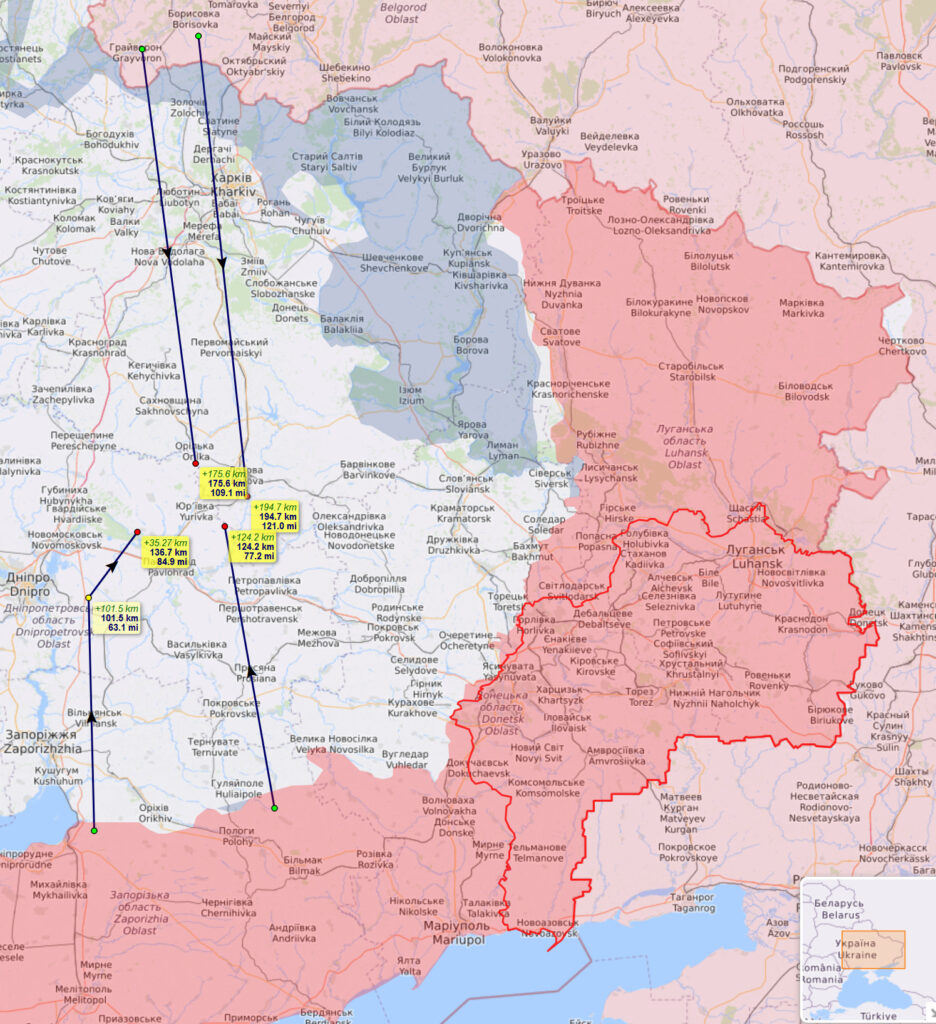
biggerThe Ukrainian army, just like the Russian one, depends on railroads for medium and long range transport. Neither has enough trucks to move the big amount of supplies that are needed to support the war.
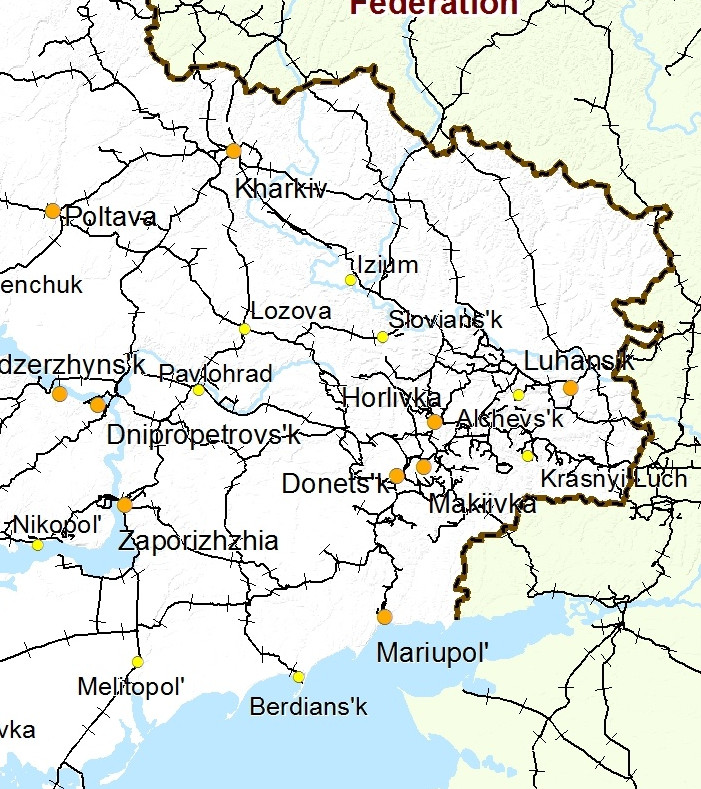
Source – biggerTo be able to supply its forces any Russian move must follow the rail lines and create some safety corridor left and right of them. Some railways will be damaged by fighting but Russia has special railroad regiments that are trained and equipped to do repairs under war conditions. The move from the south would go to Pavlovgrad (Pavlovhrad) while the move from the north would pass Kharkiv in the west and aim at Lozova. When both are taken the Ukrainian army at the eastern front will be completely cut off from the rest of Ukraine and, without supplies, will have to surrender or die.
Both are big 200 kilometer (120 miles) long moves that require significant amounts of forces. But after its mobilization and with volunteers Russia has 350,000 additional forces it can move in. 75 to 100,000 are sufficient for each push while the rest can keep the Ukrainian troops in the east very busy and fixed in their position.
Then comes the question of when.
Due to currently warmer than normal weather the ground in Ukraine is not yet frozen and the mud will return in March and April. That gives only a two months window to move forward. If I were the Russian commander I would probably wait and use the six dry months during the summer. But there are other criteria, like politics and economics, that will come into play and which may require an earlier move.
If the plan works the war will largely be over. Russian troops will be free to move anywhere in Ukraine with only little resistance. A move to retake Kherson and Odessa will then be a rather easy and short affair.
The big question is how the U.S. will respond. If the Ukraine falls the U.S. and NATO will have lost their war against Russia. That will cause serious political damage.
Thomas H. Lipscomb writes that war will be lost because it was badly planned and in a way that could never have changed its direction:
American military planning was once world class. But who would plan a proxy war against Russia, one of the acknowledged masters of artillery with far better air defense technology than any in the West, and then equip our puppet Ukraine with inferior weapons and only enough ammunition to last six months? And surely American planners couldn’t help knowing that there was no longer a manufacturing base for resupply, and NATO warehouses were practically empty?
This will have wide ranging consequences:
[T]he United States current leadership is a bunch of total idiots, blinded by ideology, arrogance and illusions of pursuing a “rule-based” global hegemony, an opportunity long passed, as our performance in this proxy war shows. The United States may have won the Cold War but it lost the peace. Its strategic thinking and its military is obsolete and configuration of both forces and equipment is based on assumptions from the past millennium. The battle for a Great Global Reset under a unipolar American hegemony has been lost as well. The World Economic Forum is now about as relevant as the Holy Roman Empire. All they can continue to do is terrorize the increasingly authoritarian states of the West with asinine policy proposals.The attempt to destroy Russia prodded it to a burst of brilliant diplomacy and leadership by Putin and his team that has quietly established that the rest of the world prefers sovereignty and a multi-polar world. The post Cold War “Pox Americana” as Larry Johnson has called it, is over. Historians of the future will study this period of history with fascination. Few times in history has such immense change happened so fast.
The effect of losing the war will be noticed in global and domestic politics. ‘Western’ global standing will be degraded and the leadership of the war party will receive some well deserved bashing.
But will the U.S. let that happen? Can it allow itself to lose this war? Or will it escalate? Even when that is likely to only worsen its situation?
I have no idea yet how and who in Washington will decide on those questions.
Posted by b on January 4, 2023 at 19:00 UTC | Permalink
This Artist Created Very Cute Covers Of The Music World, Replacing Singers With Cats

The kittens always success on the internet. For those who like to see them in fun poses, musician and designer Alfra Martini has created The Kitten Covers, a blog with classic album covers with cats digitally inserted on the scene, replacing the stars cover.




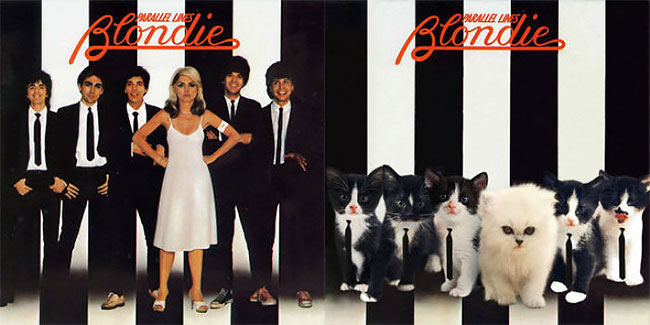



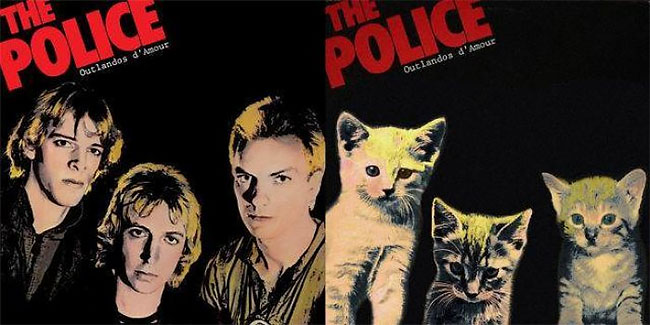
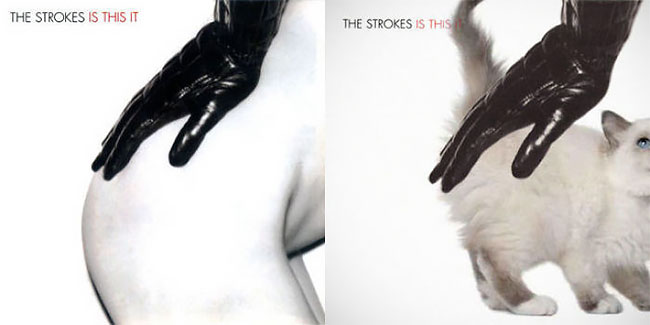

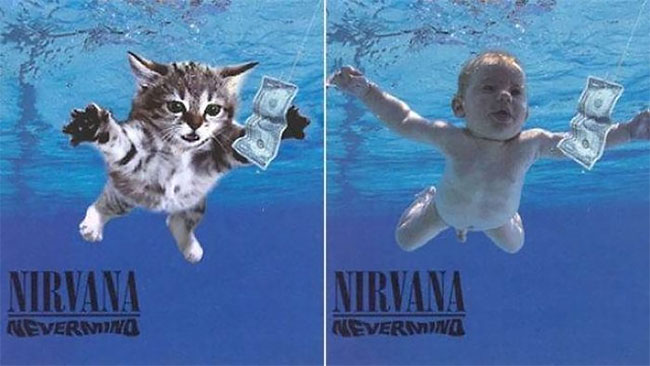
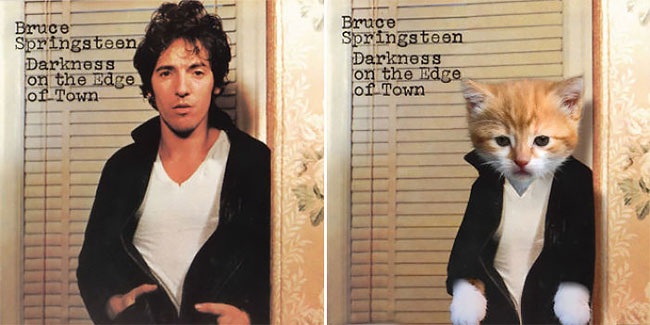
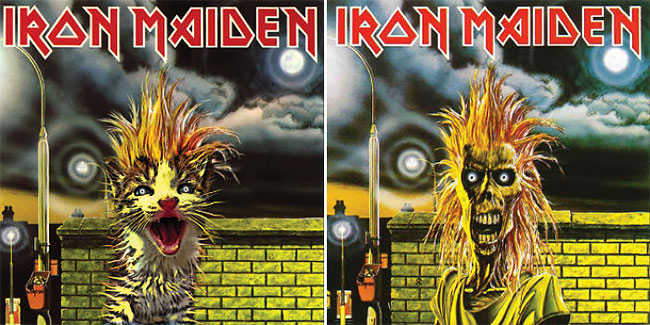



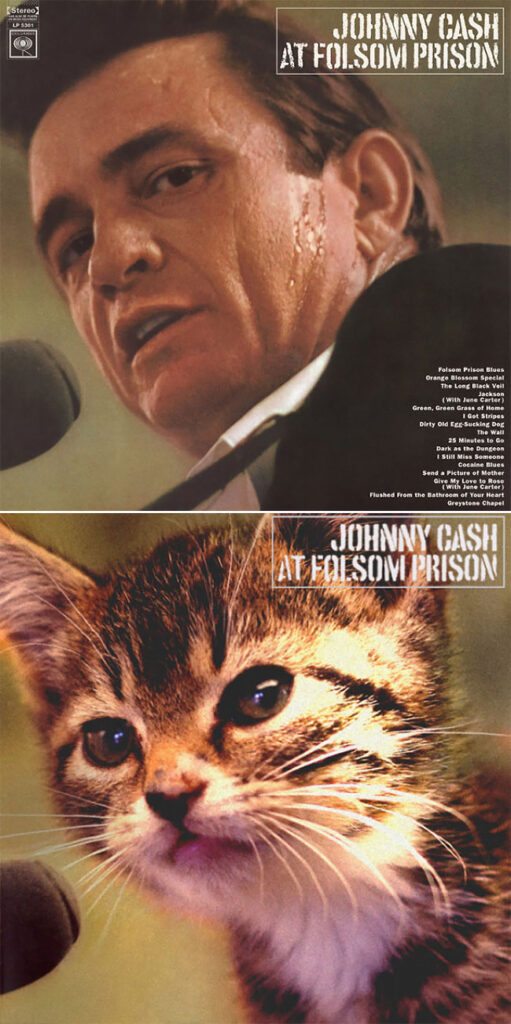

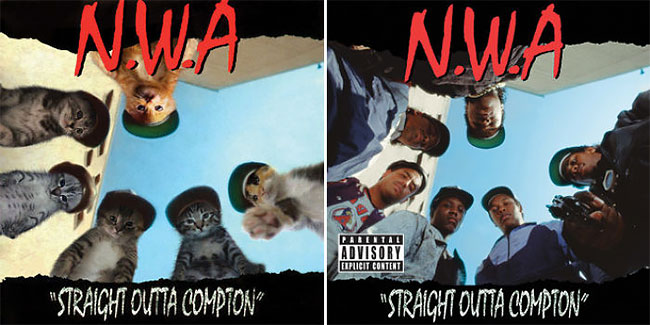








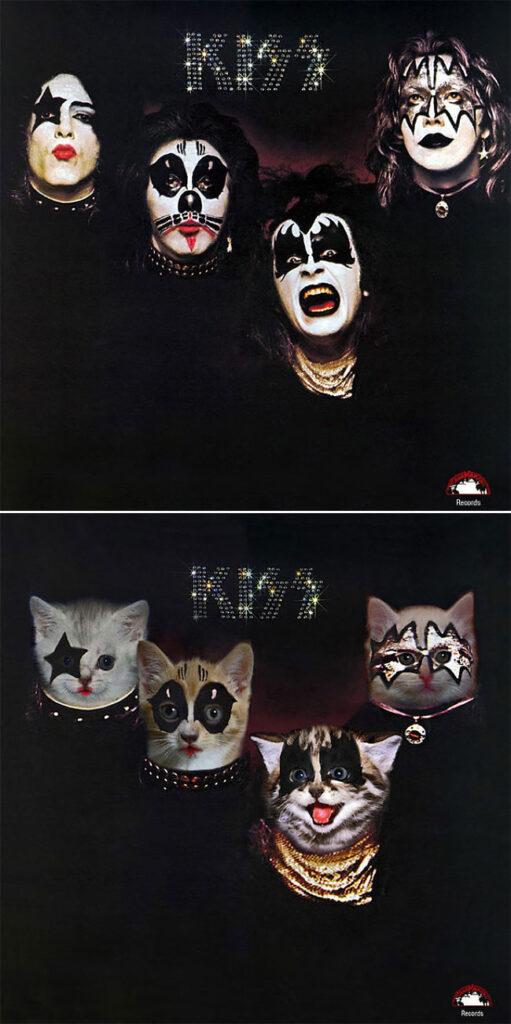






Gold ring and personal stamp
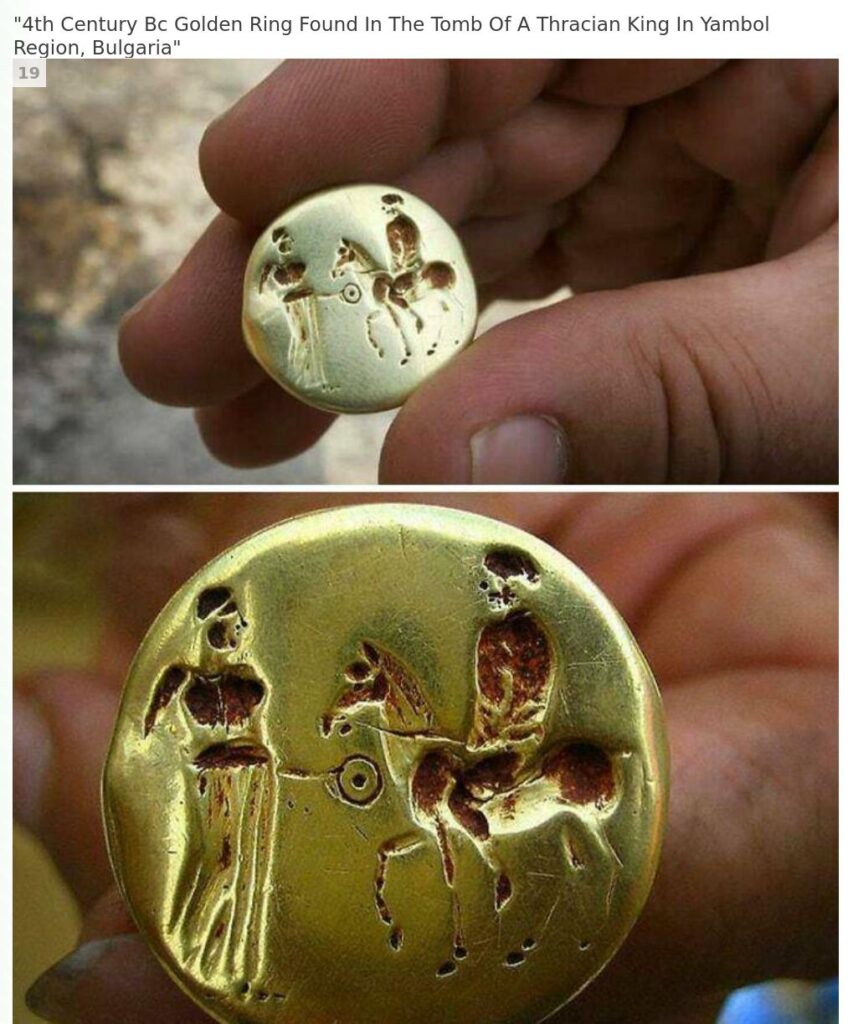
The armies were colorful

The Clock Is Ticking For Humanity As A Horrifying Fertility Crisis Looms
Is humanity running out of time? Based on the growth of the global population during the last century or so, you wouldn’t come to such a conclusion. In 1900 there were about 2 billion people living on this planet, and now there are about 8 billion. But some experts are now suggesting that we have reached a very significant turning point. Global population growth has slowed dramatically, and birth rates have actually fallen well below replacement level in many industrialized nations. Couples are having a more difficult time producing babies, and there are many that are blaming our highly toxic environment for this.
A twitter thread about our looming fertility crisis has gotten a tremendous amount of attention over the past few days.
There are some pretty bold claims being made in that thread, and I decided to fact check three of the most startling…
#1 “1 in 4 couples cannot conceive naturally”
According to the official CDC website, 19 percent of women aged 15 to 49 in the United States are not able to get pregnant…
In the United States, among heterosexual women aged 15 to 49 years with no prior births, about 1 in 5 (19%) are unable to get pregnant after one year of trying (infertility). Also, about 1 in 4 (26%) women in this group have difficulty getting pregnant or carrying a pregnancy to term (impaired fecundity).
So that would suggest that it is actually around 1 in 5 couples that are not able to conceive naturally.
However, it should be noted that the infertility rate has been steadily rising, and the number on the official CDC website reflects data that is a bit old.
If current trends continue, it is just a matter of time before “1 in 4 couples cannot conceive naturally” if we are not there already.
#2 “Sperm counts are down 60%”
This claim appears to be right on the nose. As I noted last week, a study that was recently released found that sperm counts have fallen by about 60 percent since 1973…
The latest analysis added seven years of sample collection and 44 study results to the 244 included in the earlier 2017 analysis. That study, in its analysis of data trends between 1973 and 2011, found an average decline in mean sperm concentration of 1.6% per year, and an overall decline of 59.3%. The latest study found an even steeper decline – to 2.64% post-2000 and an overall fall of 62.3% among unselected men. This, add the authors, represents a decline of –4.70 million/year, and indicates that this world-wide decline is continuing into the 21st century at an accelerated pace.
If sperm counts continue to plunge this rapidly, it won’t be too long before a majority of human males are infertile.
If that happens, the global population will begin to decline very rapidly.
#3 “if you’re an average person using regular soaps, deodorants, shampoos, body washes, conditioners, hair products, makeup, you’re ingesting over 200+ chemicals + heavy metals a day, all linked to infertility”
This claim was much harder to verify.
On the official NIH website, we are told that “pregnant women in the United States are exposed to 43 or more different potential chemical toxins”…
Environmental toxins are ubiquitous and sometimes implicated in infertility development, either through anatomical abnormalities or endocrinological dysfunction. Based on a National Health and Nutrition Survey from 2003 through 2004, pregnant women in the United States are exposed to 43 or more different potential chemical toxins.[3]Knowledge and experience in evaluating exposure to environmental toxins are critical for any reproductive endocrinology and infertility specialist.
Environmental toxins affect individuals throughout the lifespan, including prenatally, and can have various effects, from increasing cancer risk to ovulatory dysfunction to altered semen quality.
Of course the NIH has not exactly been a beacon of truth in recent years.
Without a doubt, we are all endlessly exposed to extremely hazardous toxins in our food, in what we drink, in the air that we breathe and in the products that we put on our bodies.
A lot of those toxins have been linked to infertility, and many believe that this is one of the primary reasons why birth rates have been falling all over the world year after year…
It’s happening to men and women and as well, I should add, non-human species. And what we see is that the decline in the number of children that people have is one percent per year worldwide over the past 50 years. That’s true of developed countries and underdeveloped countries. And the same rate of decline, one percent per year, is what we see for the declining sperm count, what we see for the decline in testosterone, we see for the increase in miscarriage rates, and we’ve examined in our book “Count Down,” how each of these endpoints is deteriorating, if you will, at the same rate, about one percent per year, which is another bit of evidence, although not conclusive, that these are related to a common cause.
What do you think is going to happen to us if these trends continue?
Already, the fertility rate in the United States is way below replacement level…
According to the US Census Bureau, the fertility rate – which measures how many children an average woman will give birth to during her life – was 1.6 in 2020.
This falls far below the level of 2.1 needed to maintain current population levels.
As I detail in my new book, this crisis is an existential threat to the future of humanity, but most people simply do not care.
Most of us are just going to continue to bombard ourselves and our children with highly dangerous toxins no matter what information comes our way.
Sometimes I think that we are simply too stupid to continue as a species for much longer.
Instead of trying to figure out how to avoid extinction, we have become an “idiocracy” in which our young people are constantly devising increasingly bizarre ways to get the most social media views possible…
The clock is ticking for humanity, and we cannot save ourselves from the historic catastrophe that is in front of us.
Hopefully we will realize how desperate our situation has become before time runs out completely.
Switzerland to Deploy 5,000 Army Troops to protect World Economic Forum Meeting in Davos
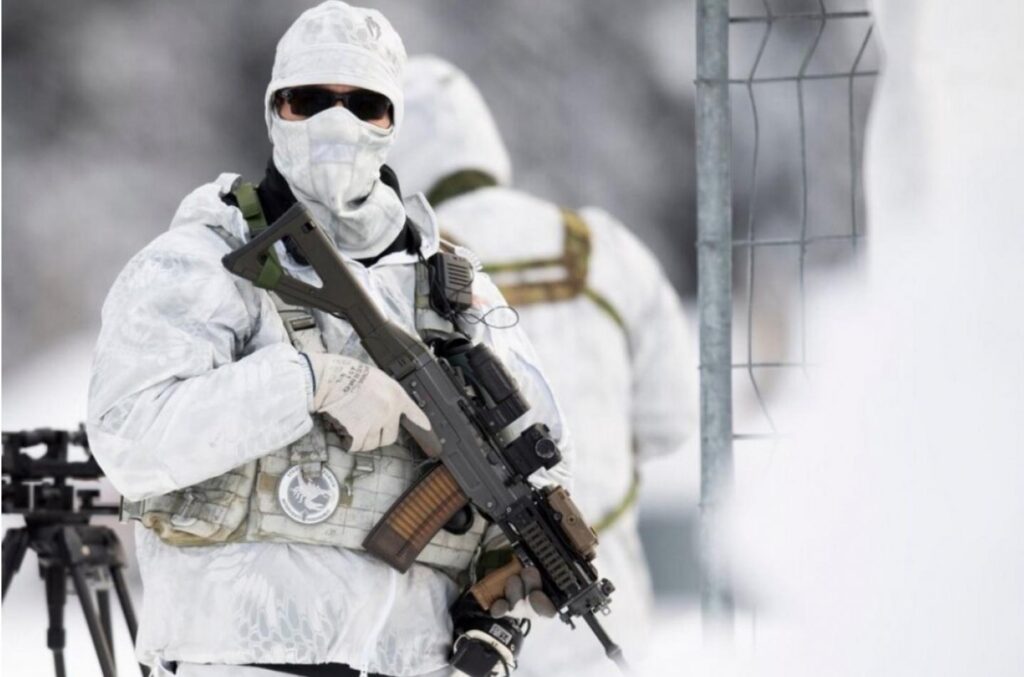
The Swiss army will deploy 5,000 troops ahead of the World Economic Forum’s next meeting in Davos. Authorities indicated the troops were authorized to utilize coercive police measures to fulfill their security mission.
“The Federal Parliament has set a ceiling of 5,000 troops who will serve in support during the WEF, which will run from January 10 to 26. Some of them will be stationed directly in Davos, where the annual meeting will be held from January 16 to 20,” the statement read.
According to the statement, other servicemen will provide logistics and air force operations support throughout Switzerland. Soldiers will be authorized to “use coercive police measures to carry out their respective tasks,” the government said.
There will also be snipers on the roofs of most buildings, and in previous years the Swiss Police have shot drones from the sky.
The WEF predicts that soon everyone will be able to ‘rent’ anything they need under the cover of ‘sustainable development’ (SDGs) and ‘saving the planet’ (Net Zero). There is no doubt that the tiny elites who rolled out the Great Reset will own it all.
The number of participants in the forum is currently unknown. German Chancellor Olaf Scholz, Spanish Prime Minister Pedro Sanchez, Ecuadorian President Guillermo Lasso, and Colombian President Gustavo Petro will attend the Davos forum personally, according to the latest information. Keir Starmer and Rachel Reeves will also be attending.
Zelensky will also speak at the World Economic Forum’s Davos meeting alongside CNN anchors and NATO chiefs.
Only distinguished delegates were allowed to fly in and out of Davos last year due to a no-fly zone.
There has been fierce opposition to the WEF’s extremist agenda, including The Great Reset, Build Back Better, and You’ll Own Nothing and Be Happy. The WEF is now feeling the heat. In response to those who oppose its techno-tyranny, it has waged a defensive PR campaign recently. The World Economic Forum also recently canceled its Twitter feed in favor of Chinese state-run social media:
1. “What we have to confront is a deep systemic and structural restructuring of our world, and the world will look differently after we have gone through this transition process (Great Reset)” – Klaus Schwab B20 Summit Indonesia 2022 Opening Remarks 14.11.2022. pic.twitter.com/H7AL0uCQXN — SikhForTruth (@SikhForTruth) November 15, 2022
Klaus Schwab gave the opening remarks in November at the B20 event. He said that “What we have to confront is a deep systemic and structural restructuring of our world, and the world will look differently after we have been through this transition process” (aka the Great Reset).
The coronavirus pandemic has been the vehicle for the Great Reset conceived by Klaus Schwab of the WEF. Globalists intend to eradicate all borders, dismantle the free market, and drastically reduce the global population.
How A Dog Should Wear Pants?

How would a dog wear pants? This twisted question has been plaguing the Internet at least since November, when a Yik Yak user posed the question, and then BuzzFeed polled its readers. Fast-forward to December when FB page Utopian Raspberry user “Norbert” posted a stylized illustration of the same question, which was then re-tweeted by Maxim editor Jared Keller, who went on to interview “Norbert.”
Read the short interview, then see the puzzling picture and Mashable’s take on it, below:
“I created it last night at about 2 or 3 am (it’s 4:30 pm now my time),” Norbert told Maxim. “I saw some dogs wearing pants, and I thought about how they don’t really have arms so their pants should technically go on every leg. I just tried both versions. I honestly didn’t expect it to become so popular,” he added. “I’m just glad people found it entertaining.”

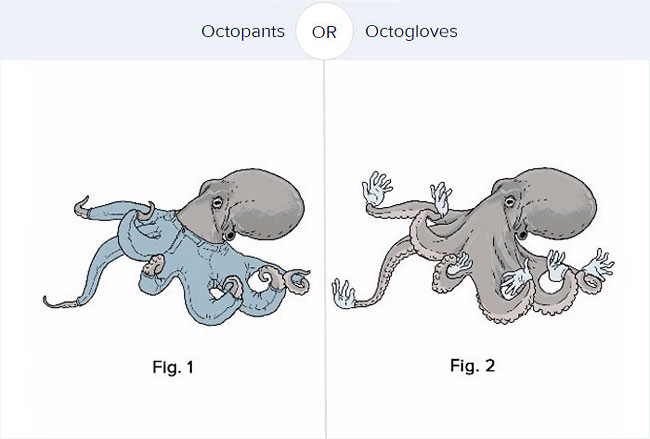




German Intelligence Worried over Ukraine Army Losses in Bakhmut
Germany’s foreign intelligence service is alarmed by losses the Ukrainian army is suffering in fighting against Russian forces in the eastern Ukrainian city of Bakhmut.
The Ukrainian army is “losing a three-digit number of soldiers every day” the BND intelligence service told a group of Bundestag lawmakers who focus on security at a secret meeting this week.
The BND warned that the capture of Bakhmut by Russian forces would have significant consequences, as it would allow Russia to make further advances. It also said the Russian army was using its own soldiers like cannon fodder in Bakhmut.
Russian forces in eastern Ukraine said on Friday that Russian forces had taken control of Klishchiivka, a small settlement south of Bakhmut in eastern Ukraine.
Confessions of a Man Who Suffered From Locked-In Syndrome
How did you get locked-in?
I was diagnosed with a terminal progressive disease May 24, 2017 called toxic acute progressive leukoenpholopathy. I declined rapidly over the next few months and by the fifth month I began suffering from locked-in syndrome. Two months after that I was sent on home hospice to die. I timed out of hospice and I broke out of locked in syndrome around July 4, 2018. I was communicating nonverbally and living in rehabilitation hospitals, relearning to speak, move, eat, and everything. I finally moved out of long-term care back to my new home December 1, 2020.
Do you know what caused the disease?
Some kind of toxic cutting agent. I’m 99.9% sure it was heroin because that was my drug of choice. I used to freebase heroin off tinfoil on a daily basis. Drugs are bad mkay!!
When did you realize that people thought you were in a coma or brain dead?
I remember very specifically as I was losing all of my bodily functions, I noticed in the hospital that no one was interacting with me anymore. When a nurse would come in change and IV, they would typically say, “Hello Mr. Haendel, I am here to change your IV”. They stopped for approximately 10 days and this is when I had an “oh shit” moment and thought to myself, ‘ no one realizes that I am cognitively in tact’. Unfortunately I overheard everything.. one of the most painful was, “don’t worry, he can’t hear you. He’s brain dead anyways”
The scary thing is recent research shows 1 in 5 comatose patients might actually be locked-in. Hopefully they can get fMRIs more readily available to distinguish between someone who is vegetative and someone who is locked-in.
What’s it like being locked-in?
I fully understood everything. My perceptions were good although I was extremely hypersensitive to everything and my internal clock was questionable as in I did not know how much time had elapsed, but I did have a pretty good idea. I could taste, smell, hear, see and feel, but like I said, I was hypersensitive to all these things and very uncomfortable. The weight of a sheet would make me itch and burn up and when a nurse would walk by, the breeze from her walking by would make my skin feel like it was burning.
Were you scared? How were your anxiety levels?
Constant panic attack… my anxiety was off the charts all the time. I am actually surprised my heart didn’t blow out considering I was in triple tachycardia.
How did the doctors know you had locked in syndrome and weren’t just completely gone?
They did not know until I started to communicate. When I could communicate verbally, I was able to describe my experience and they then realized I had been locked-in.
Didn’t they do an EEG and still see brain activity?
Yes they did and it showed slowed theta. There were some brain waves but The assumption was I was disconnected from reality or vegetative
Was the diagnosis accurate? If so, do your doctors have an explanation for how you pulled back from a disease with terminal progression, or is a relapse expected?
The diagnosis was accurate, it’s called toxic acute progressive leukoencephalopathy. I am the only documented case of recovery from Stage 4 of this disease and it baffled everyone. According to my brain scans, none of my progress should be possible but I am no longer terminal and I am basically like a newborn who has to relearn how to do everything. A relapse is not expected!
How did you occupy yourself during your time locked in?
I occupied myself with a lot of self communication. I talked to myself in two voices about literally everything. There is an article in the Guardian that goes into more detail about this if you’re interested… it’s amazing what your mind will come up with to keep entertained.
I only had involuntary vertical eye movements during the time of locked-in syndrome but I could definitely see a majority of that time.. I just couldn’t move my eyes.
How was the experience of falling sleep and waking up like?
I didn’t really fall asleep or wake up. It was more like I just passed out at time… usually from extreme tachycardia or pain.
Did you hear things people around you said assuming you couldn’t hear them/weren’t comprehending that they’d never have said otherwise?
Yes and yes unfortunately.
What kept you pushing forward and not give up on life?
Honestly, I was tired of being stuck in my mind and body. I was so frustrated that I had to break out… I literally couldn’t take it and I realized I was not dying. I overheard every day for 8 months that I would die… and guess what? I didn’t… so I just thought to myself, “I gotta get out of this”.
What was the most meaningful type of care and support were you given during your time locked-in?
I had a combination of care givers that would not speak to me to care givers that would sing to me. My dad went to extreme lengths and definitely burnt himself out in his effort to care for me both before and during hospice. In my recovery since I cam out of locked-in syndrome, the support has been overwhelming.
In terms up meaningful support, people who continued to talk to me as if I was actually there was extremely helpful. They would talk to me about the news, about their days and just “normal stuff”. They also kept saying they knew I was in there, which I was!
Keep in mind, I was transferred numerous times and supports changed frequently but the most meaningful were the people who engaged with me.
When did you realize that you were starting to recover?
Blinking for “can you hear me?” was the first time I was able to communicate and that’s when I realized that the doctors thought there was a chance I was in there. But then they started asking me other questions like “Blink if you know where you are. Blink if you know who the president is.. etc” Many were convinced that my blinking was just an involuntary action but over the next few weeks, I was taught how to stick my tongue out (barely) and that was my “yes”… so then we had a yes/no system which took me out of being completely locked-in into being virtually locked-in.
When you “broke out,” was it sudden or was it a slower process?
It felt slow to me but I’ve been told throughout this entire journey since July 4, 2018 that I’m recovering at lightning speed. That said, I hadn’t been able to communicate for 2 years, and there was so much I wanted to say that simply being able to answer “yes” or “no” felt like a snail’s pace.
How are you feeling today?
Phenomenal and truly blessed to be alive. I am sitting in my own apartment, in my own clothes. I finally feel like I have some independence but still working on literally everything every single day.
What your plans are for the future?
First things first, I would like to be able to walk and perform all my daily living tasks by myself. Aside from that, I would like to do some public speaking and be a voice for the voiceless.
Do you think it would be a good idea to leave the radio on for locked-in patients?
It would have been nice to have some music but make sure it’s not the same station all the time! And also, make sure it’s calm and soothing and not too loud because the patient might have a pounding headache! Music has always been a big part of my life and the hospital spa channel really did it for the first four hours but as we got into month two, I was freaking out and would have appreciated some variety!
What is your biggest most profound takeaway of this unique challenge you had to face?
The biggest takeaway is don’t take things for granted… it might sound cliche, but I truly appreciate all the small things. And never give up! seriously!
$31,395,133,116,713.19
The United States of America is now within five billion dollars of it’s legal DEBT CEILING and unless the . . . REPUBLICAN. . . House of Representatives takes action, the US will default on its obligations within a month. THAT would crash the global economy.
The U.S. government is on track to max out on its $31.4 trillion borrowing authority as soon as this month. That starts the clock on an expected standoff between President Joe Biden and House Republicans. Default looms with the global economy at stake.
Once the government bumps up against the cap — it could happen any time in the next few weeks or longer — the Treasury Department will be unable to issue new debt without congressional action. The department plans to deploy what are known as “extraordinary measures” to keep the government operating. But once those measures run out, the government could be at risk of defaulting unless lawmakers and the president agree to lift the limit on the U.S. government’s ability to borrow.
The expected showdown over the debt limit would be a stark display of the new reality for Biden and his fellow Democrats, who enjoyed one-party control of Washington for the past two years. It would presage the challenges to come in achieving even the modest ambitions that Democrats are bringing to the task of legislating in a divided Capitol.
The White House has insisted that it won’t allow the nation’s credit to be held captive to the demands of newly empowered GOP lawmakers. But it has no choice. The Constitution gives to CONGRESS the sole power to spend money and unless Congress ups the limit, the Biden Administration is dead in the water, financially.
Moreover, the concessions made by new House Speaker Kevin McCarthy in his arduous path to securing the job raise questions about whether he has the ability to cut any kind of deal to resolve a standoff.
With this kind of leverage at their disposal, House Republicans can make certain __their__ pririties are met. Like canceling the 87,000 new IRS Agents. The House passed a Bill to do just that, as their first order of business last week. But Biden has already said he will Veto that bill.
He may.
But when it comes time to negotiate over the debt ceiling, things like that will come back to bite Biden.
The stakes are treacherous. Past forecasts suggest a default could instantly bury the country in a deep recession, right at a moment of slowing global growth as the U.S. and much of the world face high inflation because of the coronavirus pandemic and Russia’s invasion of Ukraine.
When Media Provide ‘Analyses’
There was a time when news and opinion pieces were all there was in a newspaper. The usual advertisements and crossword puzzles were just the supporting extras on top of that. But some two decades ago a new form of ‘news’ was added to the content. It called itself ‘analyses’ and claimed to be a neutral form of discussing this or that item. Written by journalists, not opinion editors, it was supposed to be fact based.
But after reading many of those ‘analysis’ I found that they are mostly used for propaganda. Their conclusions are obviously developed before the journalist or ‘columnist’ goes out and collects whatever may support those.
We find one example of such ‘analysis’ in today’s Washington Post.
Written by Ishaan Tharoor it opens with a very broad claim.
‘Give them the tanks!’: Davos elites rally behind Ukraine
DAVOS, Switzerland — At this annual meeting where global elites are urged to collaborate, cooperate and get along, one message rang loudest: Send the weapons. As in the previous World Economic Forum session in May, the war in Ukraine loomed large in discussions. And while political leaders voiced their steadfast support for Kyiv, so too did a host of major corporate bigwigs.
The first question is of course why the people who fly in their private or government jets to Davos to discuss the climate problems they are causing are supposed to be ‘elites’.
But lets set that aside for now. What I really quarrel with is the selection of people mentioned in the peace all of which want to ship even more weapons to Ukraine.
There is the Ukrainian oligarch Victor Pinchuk, Ukrainian President Volodymyr Zelensky and the ever mealy mouthed CNN filler Fareed Zakaria.
Next to Zelensky was the …
… former British prime minister Boris Johnson — who, no matter his controversial ouster at home, remains a popular figure among Ukrainians
One wonders how many Ukrainians Thardoor has spoken with before making that ‘popular figure’ claim. Recall that it was Johnson who in early April 2022 prevented Zelensky from signing a peace agreement with Russia and urged him to wage a wider war:
According Ukrainska Pravda sources close to Zelenskyy, the Prime Minister of the United Kingdom Boris Johnson, who appeared in the capital almost without warning, brought two simple messages.The first is that Putin is a war criminal, he should be pressured, not negotiated with.
And the second is that even if Ukraine is ready to sign some agreements on guarantees with Putin, they are not.
Johnson’s position was that the collective West, which back in February had suggested Zelenskyy should surrender and flee, now felt that Putin was not really as powerful as they had previously imagined, and that here was a chance to “press him.”
…
After that, according to Ukrainska Pravda sources, the bilateral negotiation process [with Russia] was paused.
Since then some 300,000 Ukrainians were wounded and some 150,000 Ukrainian soldiers have died. What do they or their relatives think about Johnson’s intervention? Is he ‘popular’ for them?
Tharoor goes on:
In Davos, the sentiment was overwhelming. “Give them the tanks! There’s absolutely nothing to be lost,” Johnson insisted, adding that the world needed to place greater trust in the Ukrainians’ courage and fighting spirit. “We continually underestimated the willingness and the ability of Ukrainians to fight and defend their homeland. … They proved the world completely wrong. They are going to win. We need to help them win as fast as possible.”
Is some uttering of the ever lying Boris Johnson ‘elite’? Does it really reflect the opinion of those in Davos?
Tharoor has more sources.
In its pavilion, U.S. tech company Palantir hosted Ukrainian Vice Prime Minister Mykhailo Fedorov, who celebrated his nation’s usage of Palantir’s data-driven software in its prosecution of the war against Russia.At the same breakfast session, Larry Fink, CEO of BlackRock, the world’s largest asset manager, spoke of his plans to help coordinate billions of dollars worth of reconstruction financing for Ukraine, saying he hoped the initiative would also turn the country into a “beacon of capitalism.” David Solomon, CEO of Goldman Sachs, spoke cheerily of Ukraine’s postwar future. “There is no question that as you rebuild, there will be good economic incentives for real return and real investment,” he said.
Nothing of the above is a real opinion. These are people hyping their businesses which they hope will profit from the war.
A succession of European leaders, like Finnish Prime Minister Sanna Marin, insisted their governments would maintain total support for Ukraine for as “long as it takes.” Members of a bipartisan U.S. congressional delegation echoed the sentiment. The rhetoric belies concerns privately held by many officials: As my colleagues reported Thursday evening, CIA Director William J. Burns recently traveled to Kyiv to meet Zelensky to brief him on U.S. expectations for Russia’s upcoming military campaigns and convey that, at some point, the scale of current assistance to Ukraine may be harder to come by.More the reason, Ukraine’s supporters contend, to rush aid now and help Ukraine make more rapid gains. “Whenever Ukraine goes to negotiations, it has to go in as strong as possible in those talks,” Finnish Foreign Minister Pekka Haavisto told me.
That’s it for the ‘facts’ underlying the nonexistent ‘analysis’ of that column.
The only one talking tanks is the bygone British prime minister Boris Johnson. Nothing provides support for the claim that it is the ‘overwhelming sentiment’.
There is nothing provided by Tharoor but a collection of the current standard blabber of ‘western’ politicians and marketing talk by some business folks who are hoping for large payouts to them.
His ‘analysis’ is a war mongering opinion peace. Its conclusion was preconceived.
‘Elite’ it is certainly not.
The twilight zone finchley
Tanks to Germany
An anaolgy for the tanks being sent by the west to Ukraine :
Back in 1967, the Honda Motor Company abandoned it’s motorcycle grand prix efforts to concentrate on car developement and manufacture. Or so the official line goes. However behind that story was the fact that every motorcycle they fielded in competiton used completely unique parts, even down to the ‘ clip on ‘ handlebars and the maintenence and technical requirements were a huge financial drain on the company.
The west is cobbling together an assortment of different fighting vehicles, each without compatibility to the other, or Ukraine’s troops, each a complex and difficult machine to master, let alone intergrate with Ukraine’s military. They all require their own spares, logistical back up and mainteneance programes and each are designed to operate in a different theatre of combat than the Ukraine.
The fact that these ‘ elites ‘ and western politicians are deaf to more expert voices who tell them this is not going to achieve anything.
( In the case of the U.K. they have so few, that a mere 14 sent will severely affect the number of ‘ new ‘ Challenger 3 tanks, which apparently will be built on the Challenger 2 platform. The U.S. Bradleys which are difficult in every aspect to operate. The German Leopard 2 series have many upgrades for other countries requirements and are not all compatible. That the U.S. Abrams is a gas guzzling, heavy monster that requires a logistic chain that the Ukraine military has no hope of creating etcetra. And what happens when an example or two end up intact in Russian hands? ).
These comment about sending more arms marks them out as wealthy fools whose only elite capability is to clean the latrines at Davos, rather than discuss complex geopolitical issues.
Posted by: Beibdnn. | Jan 20 2023 17:14 utc | 25
Nantucket Pie (Cranberry Pie)
A New England favorite, this Nantucket Pie is not really a pie. It’s more like a cake. It’s delicious whether you call it a pie or a cake!

Do not use frozen cranberries for this pie. Only fresh cranberries will work.
Ingredients
Topping
- 2 cups halved fresh cranberries
- 1/2 cup chopped walnuts
- 1/2 cup granulated sugar
Cake
- 2 large eggs
- 3/4 cup butter, melted and cooled
- 3/4 cup granulated sugar
- 1 cup all-purpose flour
Instructions
- Heat oven to 350 degrees F. Heavily spray an 8- or 9-inch springform pan with oil. Line a baking sheet with parchment paper.
- Topping: In a medium bowl combine cranberries, walnuts and sugar. Toss well. Pour mixture into prepared springform pan. Spread evenly and pat down a bit.
- Cake: In a medium bowl, combine eggs, butter and sugar. Mix until smooth, then add the flour. Mix until smooth. Batter will be thick. Spread batter gently with a spatula over the cranberry-walnut mixture until all areas are covered.
- Place springform pan on prepared baking sheet, and bake for for 30 to 35 minutes.
- After removing from the oven, let it sit for 15 minutes.
- With a butter knife, gently go around the edge of the pan. Slowly, release the side of the pan and remove the ring.
- Let the pie sit for another minute. Then gently invert onto a plate. As you slowly begin to remove the bottom of the pan from the top of the pie, use a butter knife to guide the topping away from the pan, if necessary.
- Cool and serve.
Hornets Nest That Formed Around The Face Of A Wooden Statue That Was Left In A Shed

This Artist Photoshops Old Paperback Books With Ridiculous Titles
Even though the internet is primarily focused on knowledge, connecting people, and providing services, a very nice and, to be honest, necessary function of the internet is to give people things to laugh about.
In the sea of comedy that anyone can find on the various social media, there’s also Paperback Paradise, a page dedicated to photoshopping vintage paperback book covers with funny, weird, and absurd titles, subtitles and marketing blurbs that were oh so popular on books back in the day; and Domi, the artist behind the self proclaimed “world’s #1 used book store”.



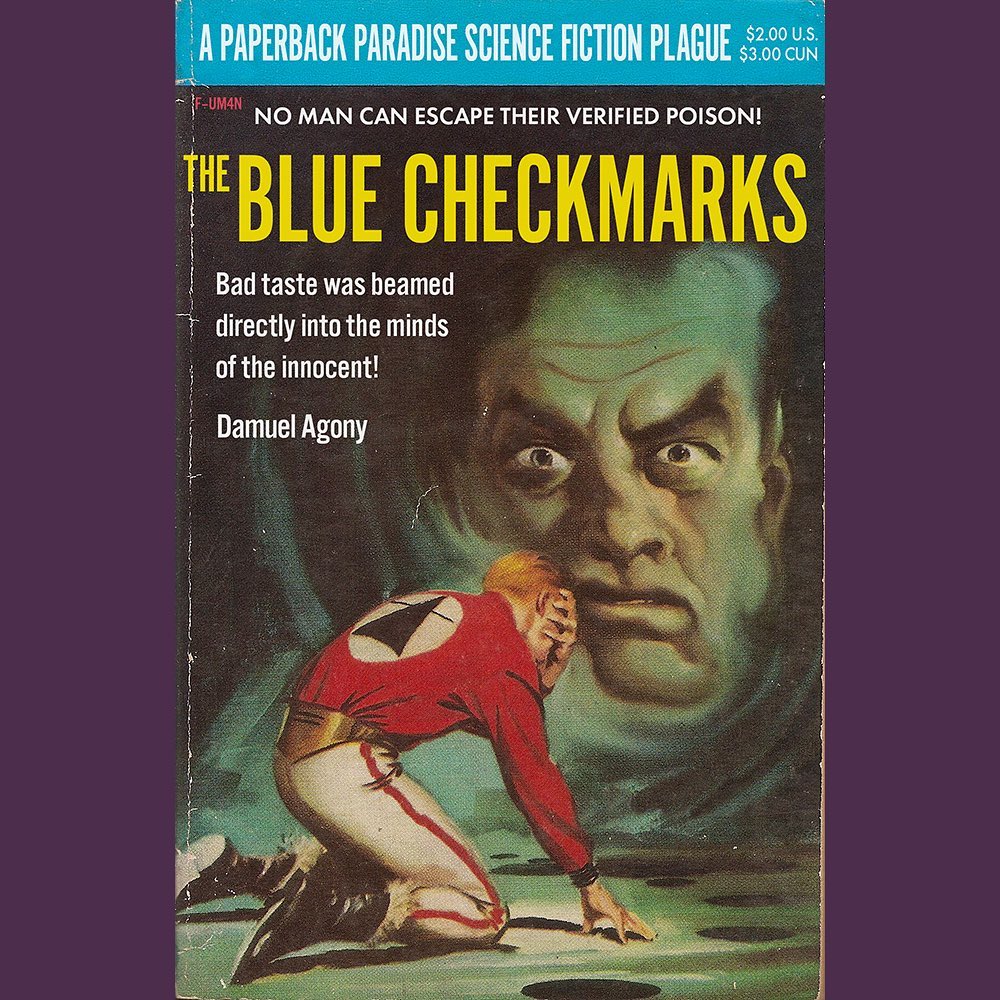


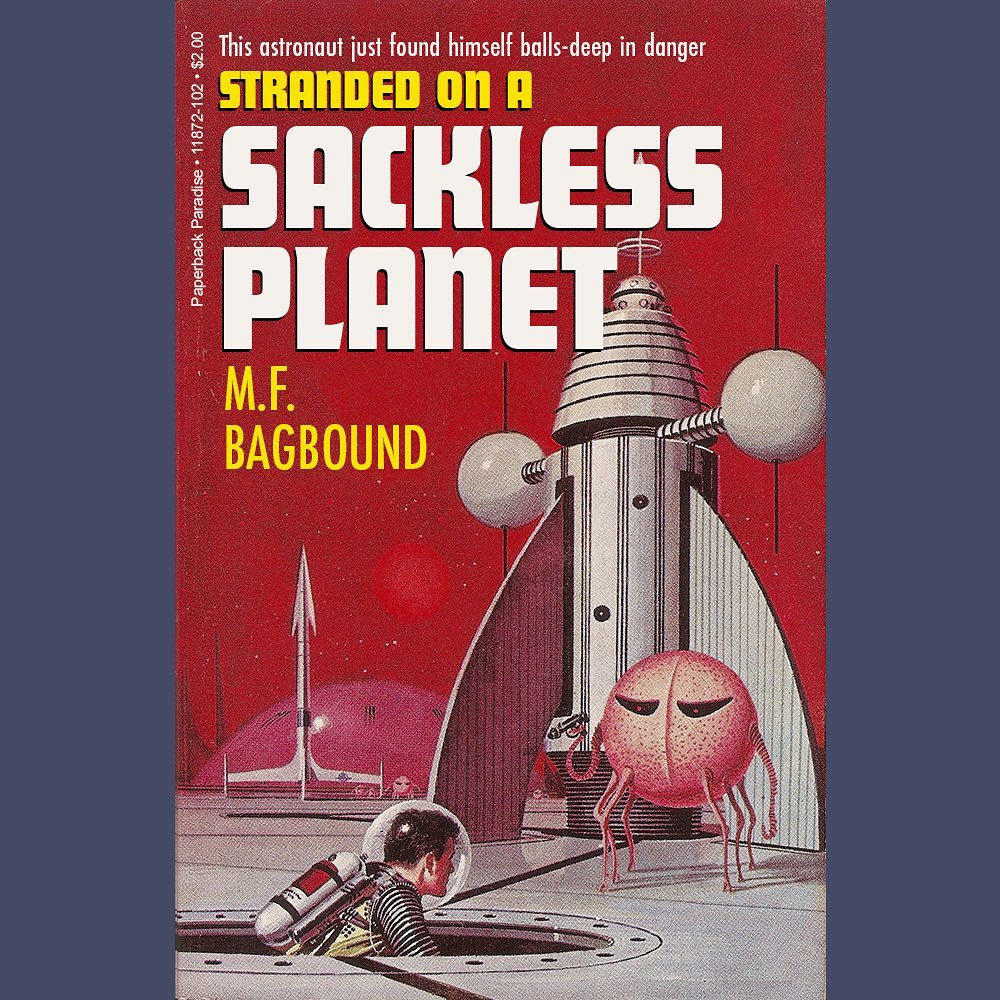


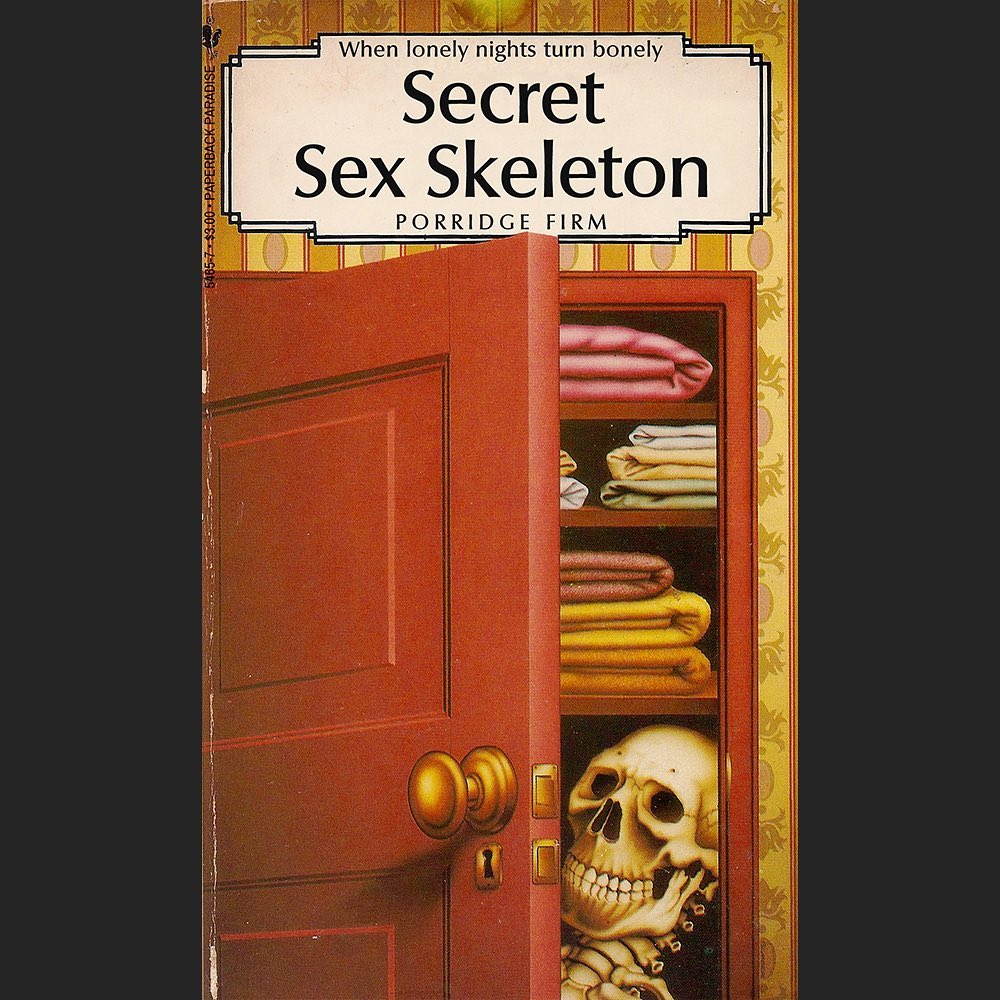




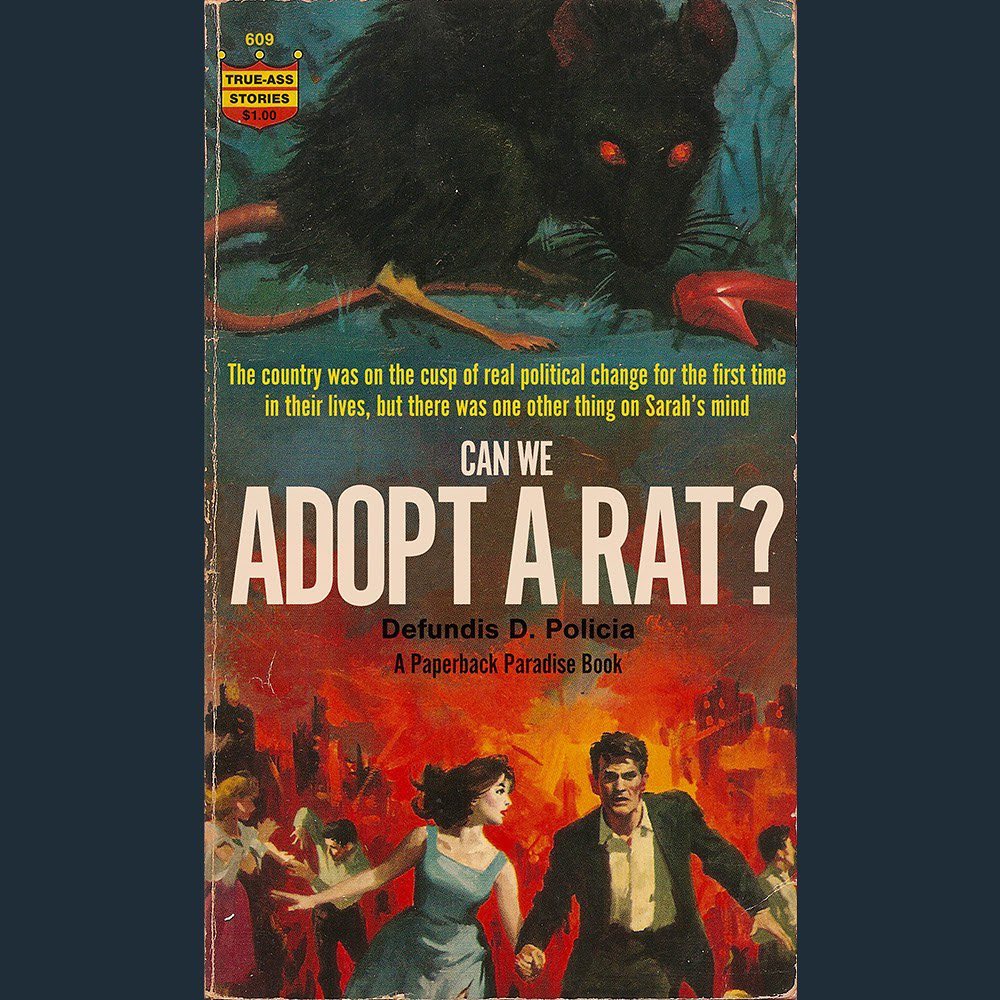






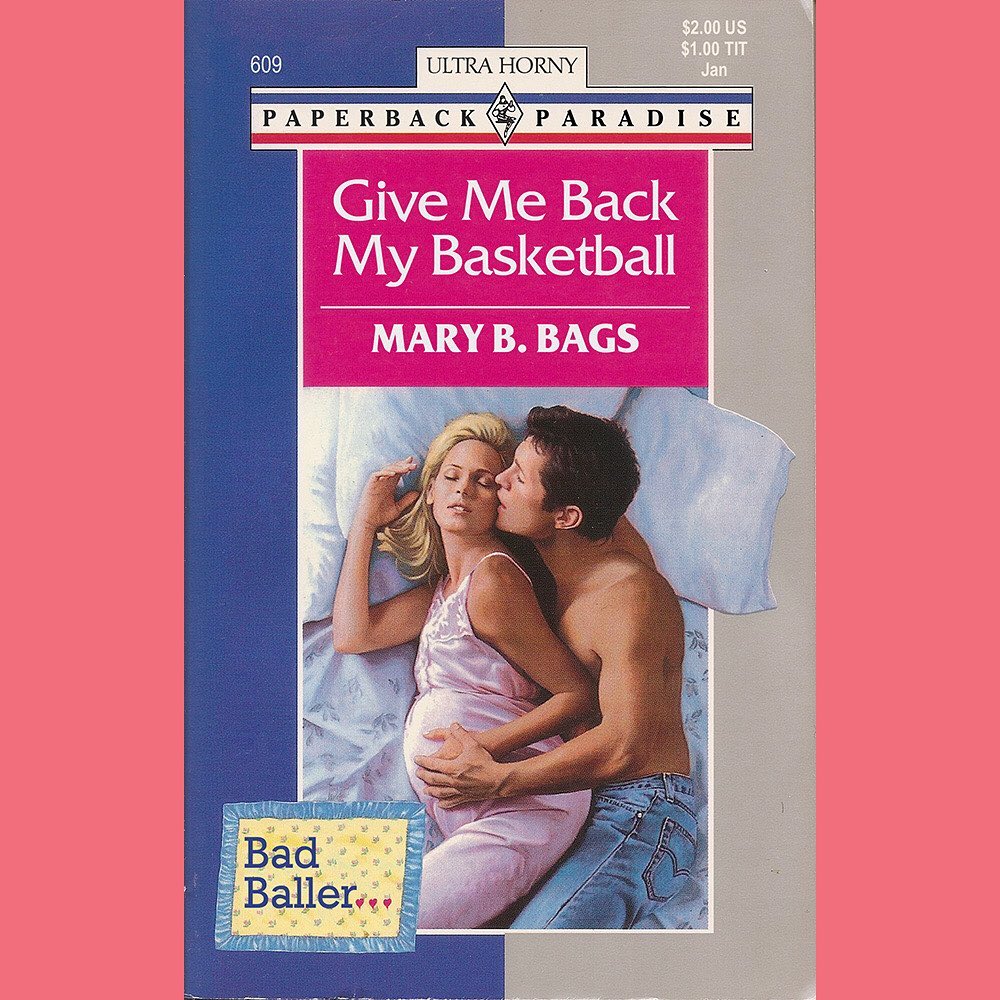



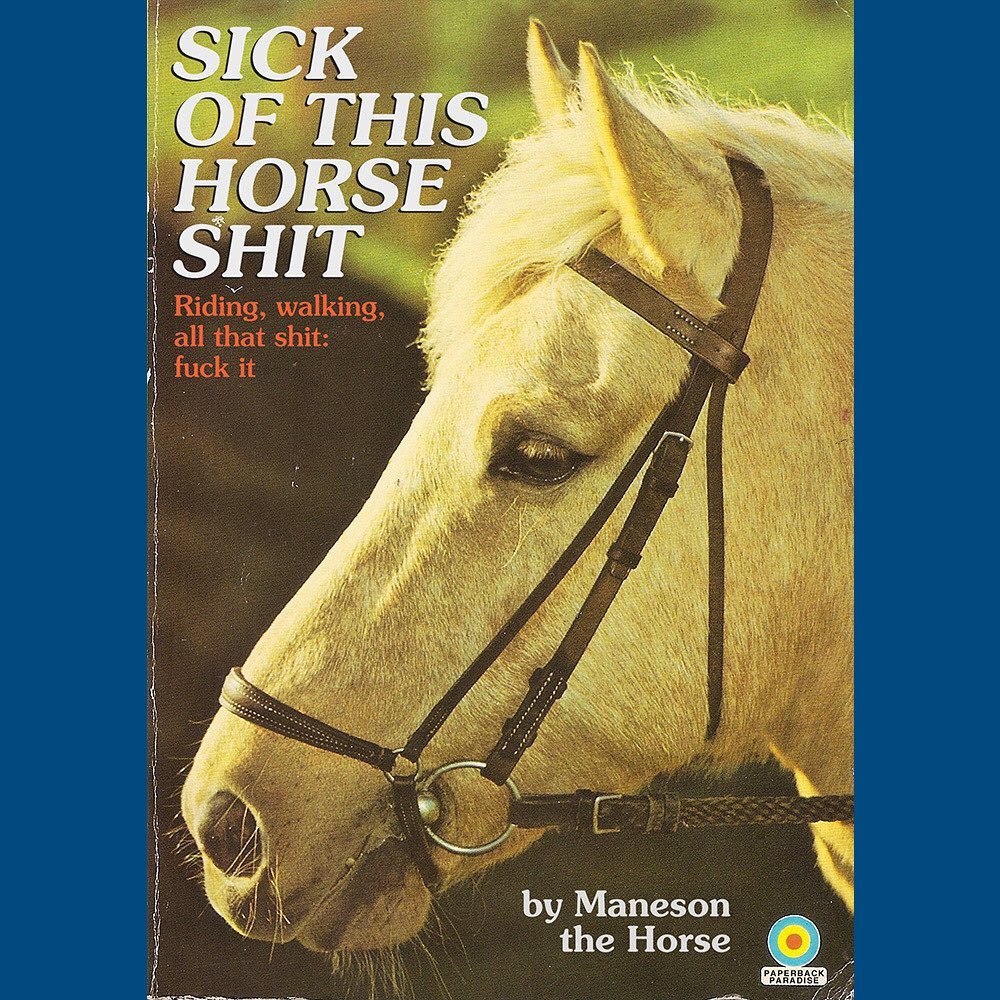
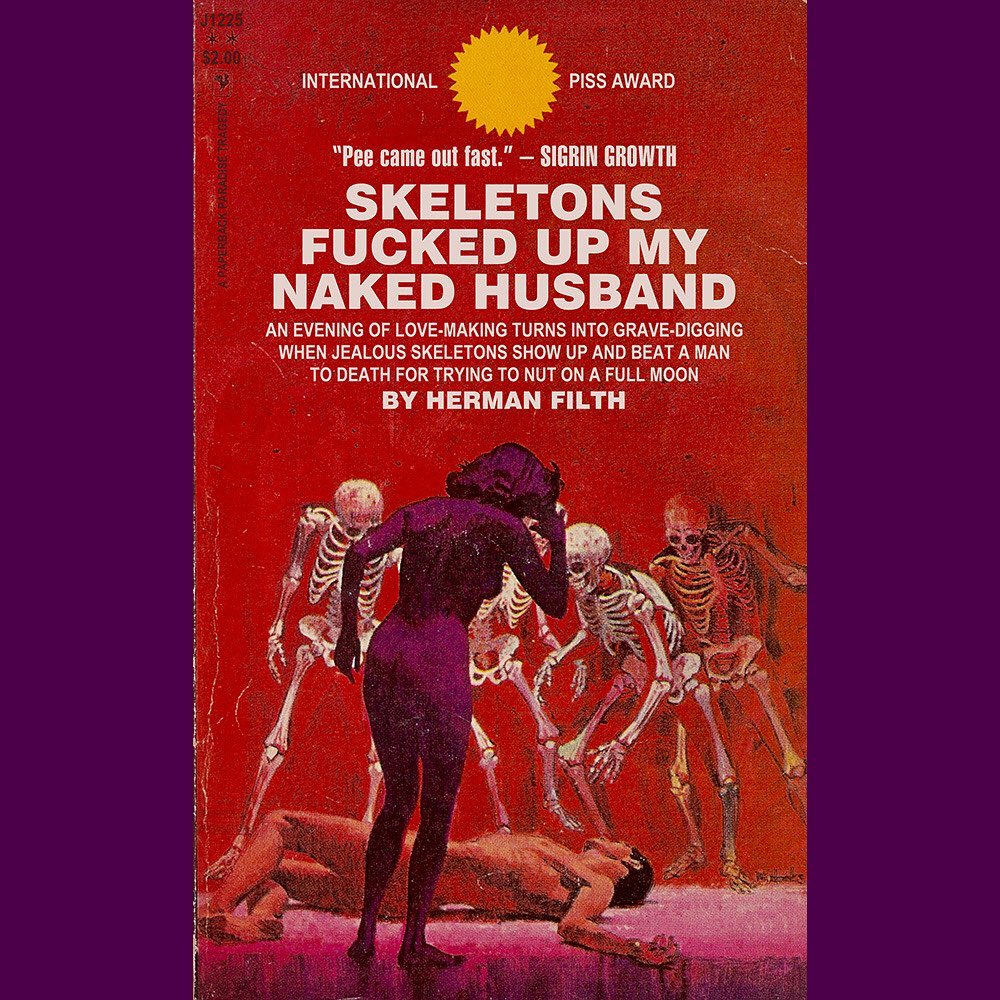

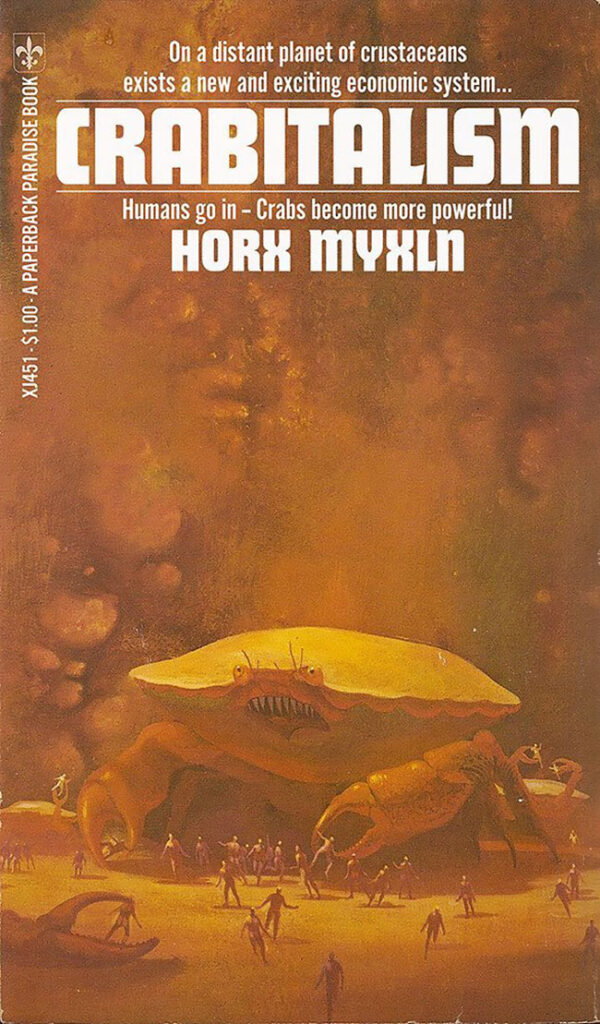




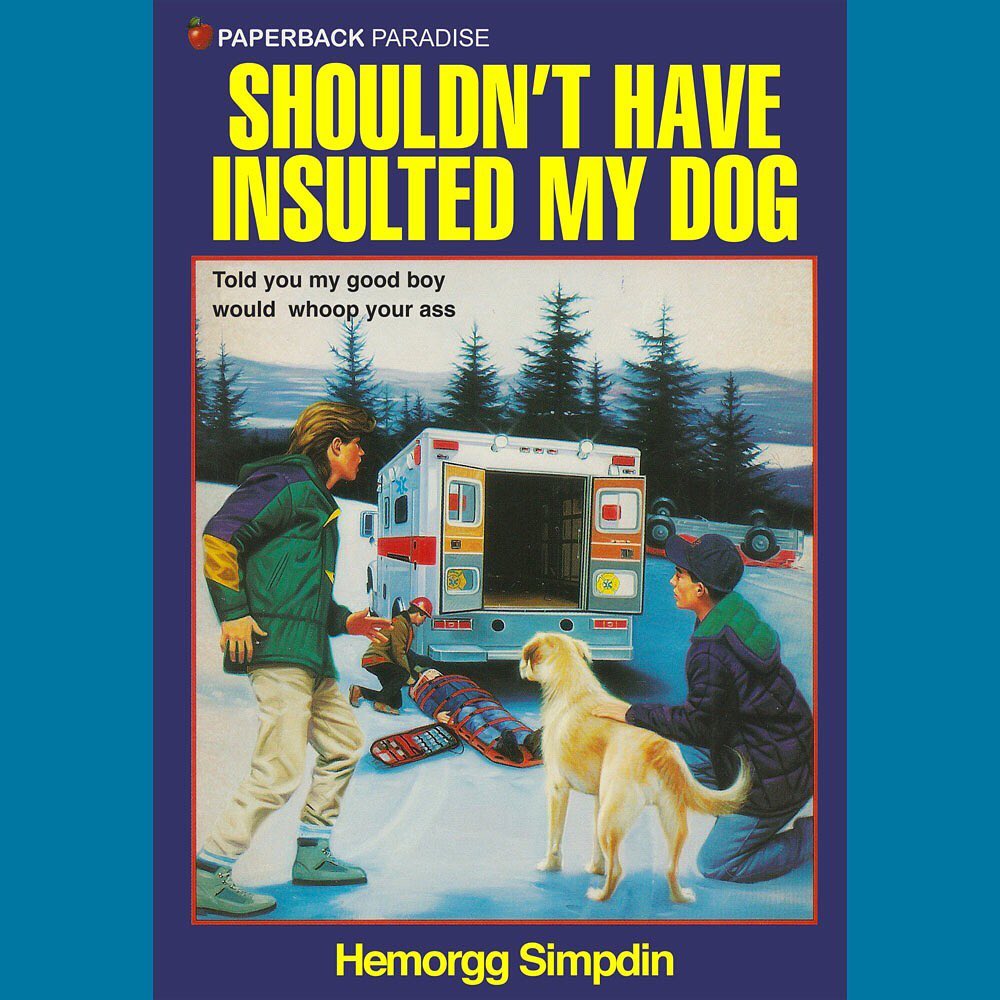



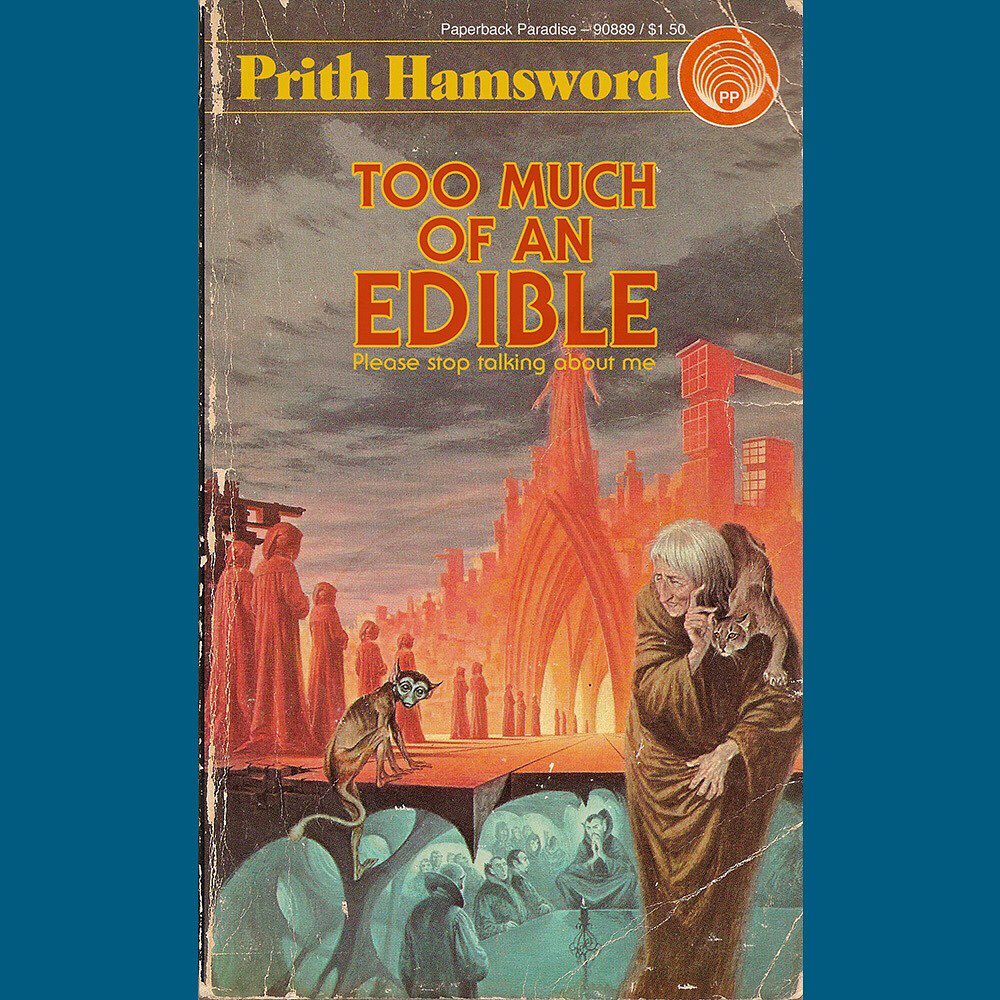
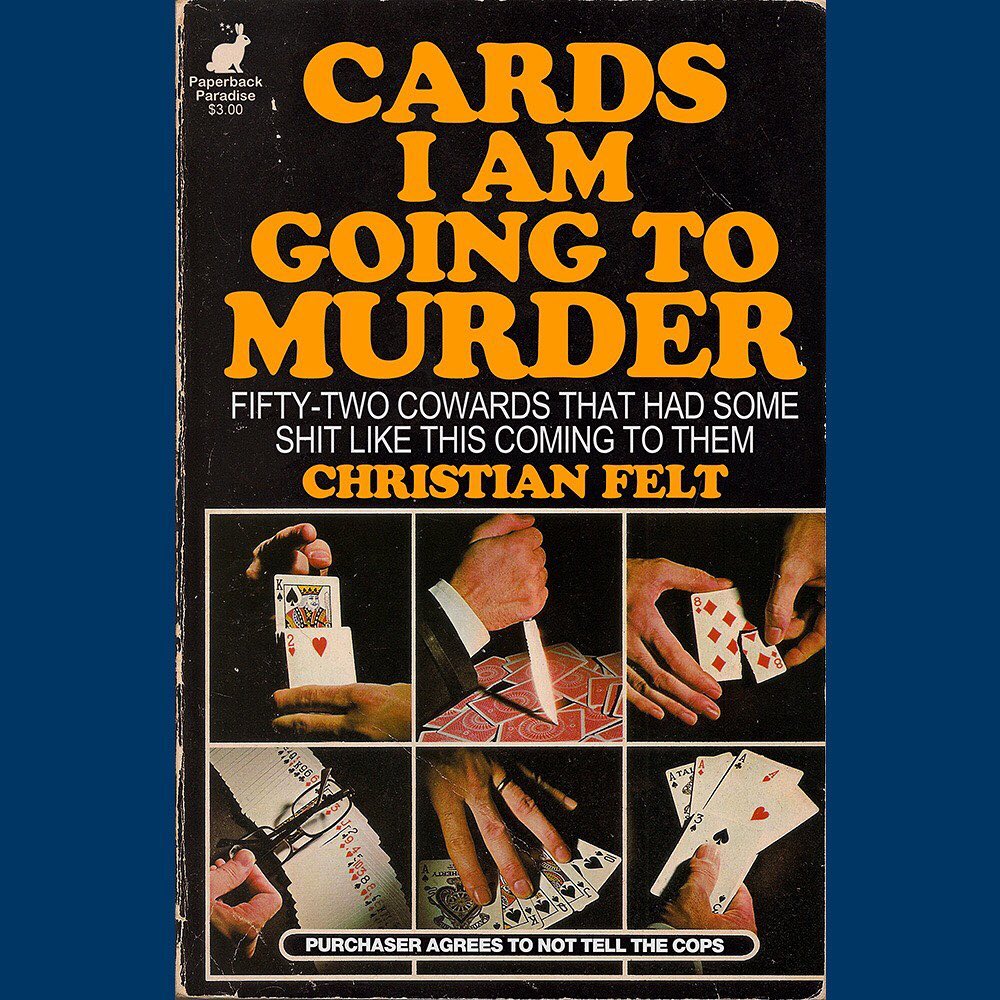







Mystery solved!

The Time Element – Rod Serling (1958)
This is excellent. Superb writing as always from Rod Serling – a real shame there’s no writing like this on TV now.

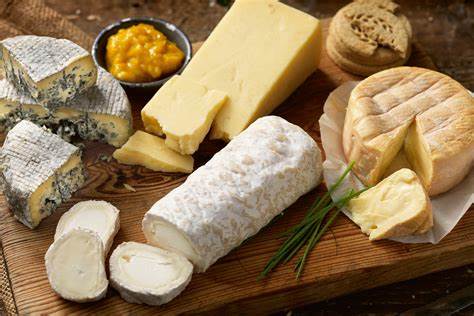

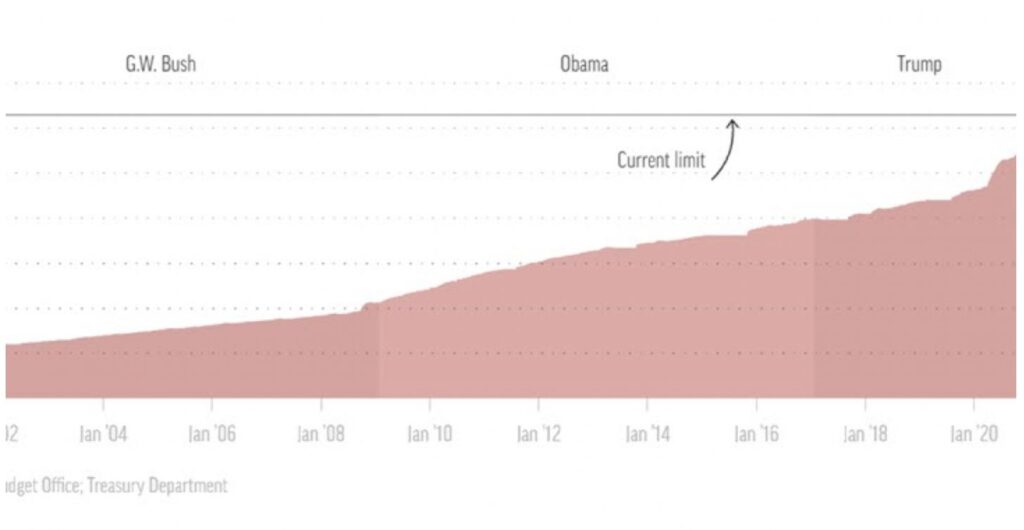
I love these book covers.
But I don’t like the ancient, dysfunctional tanks being sent over to a battered Ukraine.
Those book covers!!!
Laughing out loud!
Especially “Sick of this Horse Shit”!
‘Shouldn’t have Insulted my Dog’ LOL
Love theAlbum covers with cats. Awesome.